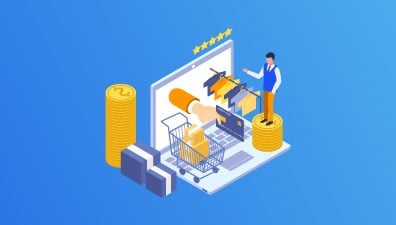B2B omnichannel marketing represents a paradigm shift in how businesses engage with their customers. It is a strategic imperative for B2B companies aiming to thrive in today’s complex and fast-paced market. By embracing an omnichannel approach, businesses can not only meet but exceed customer expectations, driving growth and success in the digital age. This comprehensive blog post will delve deeper into the intricacies of B2B omnichannel marketing, exploring its key components, strategies, challenges, and real-world examples of successful implementations.
Table of Contents
B2B Omnichannel Marketing
Omnichannel marketing has emerged as a crucial strategy for delivering a seamless and integrated customer experience. By leveraging multiple interconnected channels, B2B omnichannel marketing enables businesses to meet the complex needs of their clients, providing personalized and consistent interactions that drive engagement and foster long-term relationships.
Definition and Importance of B2B Omnichannel Marketing
Omnichannel marketing is a holistic strategy that integrates all available marketing channels to create a seamless and unified customer experience. Unlike traditional multichannel marketing, where each channel operates independently, omnichannel marketing ensures that all channels are interconnected, allowing for a consistent and personalized customer journey.
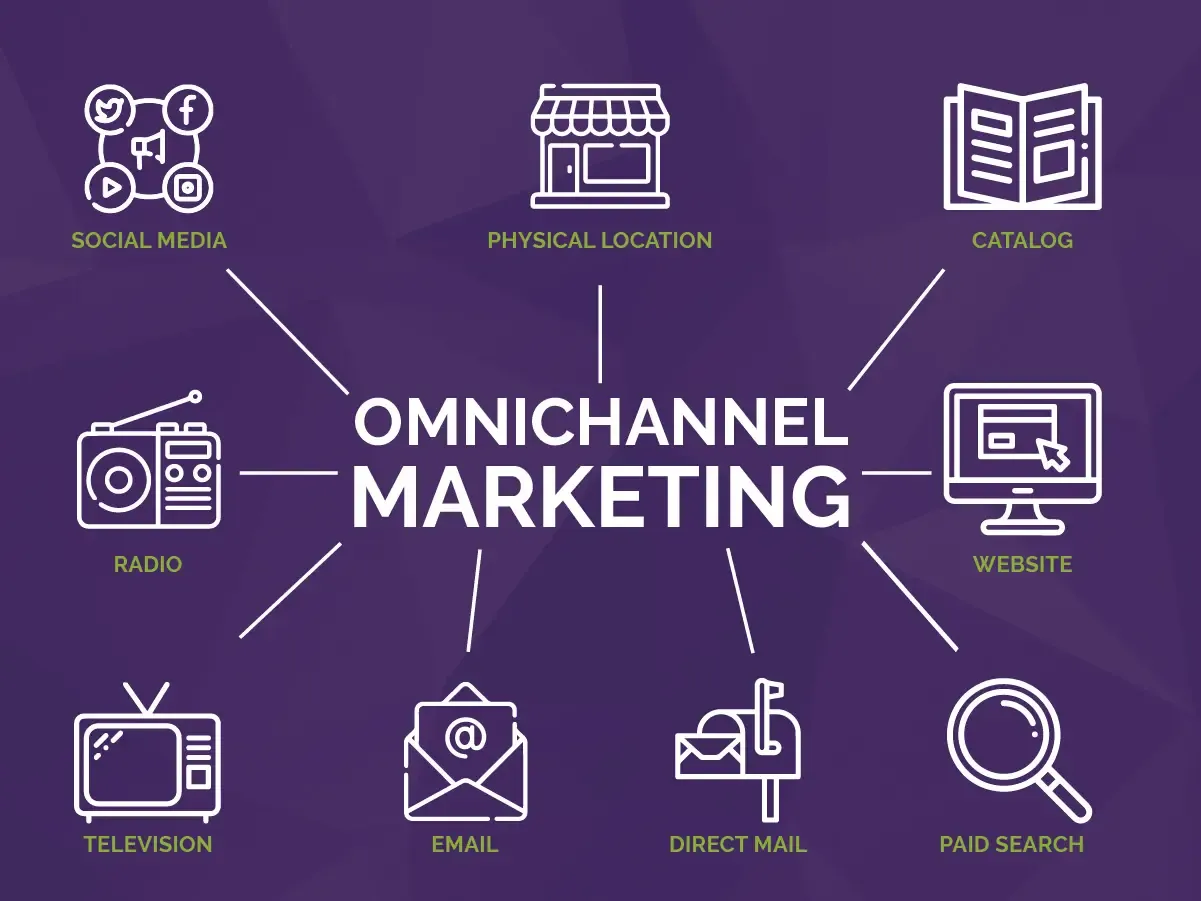
In essence, omnichannel marketing aims to break down the silos between different marketing channels, such as websites, email, social media, mobile apps, and in-person interactions, to provide a cohesive and integrated experience. This approach leverages data and technology to track customer interactions across various touchpoints, enabling businesses to deliver relevant content and offers at the right time.
B2B Omnichannel Marketing is the application of omnichannel principles in the business-to-business context. B2B transactions often involve longer sales cycles, multiple decision-makers, and higher stakes compared to B2C interactions. Therefore, B2B omnichannel marketing strategies must be tailored to address these complexities and provide value at each stage of the buyer’s journey.
- Longer Sales Cycles: B2B sales processes are typically more prolonged and require nurturing over time. Omnichannel marketing helps maintain engagement with potential clients through continuous, relevant interactions across multiple channels, ensuring that they receive the information and support they need at each stage of the decision-making process.
- Multiple Decision-Makers: In B2B scenarios, purchasing decisions often involve several stakeholders, each with unique needs and concerns. Omnichannel marketing allows for targeted messaging and personalized content delivery to address the specific interests of each decision-maker, facilitating smoother consensus and approval processes.
- High-Value Transactions: B2B deals often involve significant investments, making trust and relationship-building crucial. An omnichannel approach ensures that all customer interactions contribute to a positive and cohesive brand experience, strengthening trust and credibility over time.
- Personalization and Relevance: Omnichannel marketing in the B2B context emphasizes personalization and relevance. By leveraging data analytics, businesses can gain insights into customer behavior, preferences, and pain points, enabling them to deliver highly targeted and personalized content that resonates with their audience.
- Integration of Digital and Traditional Channels: B2B omnichannel marketing seamlessly integrates digital and traditional marketing channels. This includes combining online efforts like SEO, content marketing, and social media with offline tactics such as trade shows, direct mail, and face-to-face meetings to create a unified strategy.
- Customer-Centric Approach: At its core, B2B omnichannel marketing is about putting the customer at the center of the strategy. It involves understanding the customer journey in detail, identifying key touchpoints, and ensuring that each interaction adds value and moves the customer closer to a purchasing decision.
Core Concepts of Omnichannel Marketing
Seamless Customer Experience
A seamless customer experience is the cornerstone of B2B omnichannel marketing. It refers to the creation of a unified and consistent journey for the customer across all touchpoints, ensuring that each interaction is smooth and integrated, regardless of the channel used. This involves a few key elements:
- Consistency Across Touchpoints: In B2B omnichannel marketing, consistency is crucial. Every interaction a customer has with the brand, whether through email, social media, a website, or in-person meetings, should reflect the same message, tone, and level of quality. This builds trust and reinforces the brand’s identity.
- Personalization: Personalization goes beyond addressing the customer by name. It involves tailoring content, offers, and interactions based on the customer’s behavior, preferences, and stage in the buyer journey. B2B omnichannel marketing leverages data analytics to gain insights into customer needs and deliver highly relevant experiences.
- Real-Time Engagement: B2B customers expect timely responses and interactions. Real-time engagement tools, such as live chat, AI-driven chatbots, and personalized email responses, ensure that customers receive immediate support and information, enhancing their experience.
- Customer Journey Mapping: Understanding the customer’s journey is essential for creating a seamless experience. This involves mapping out all possible touchpoints and interactions a customer might have with the brand, identifying potential pain points, and optimizing each stage of the journey to ensure smooth transitions and positive experiences.
- Feedback Loops: Continuous improvement is key to maintaining a seamless customer experience. Implementing feedback loops allows businesses to gather customer insights, identify areas for improvement, and make necessary adjustments to their omnichannel strategies.
Integration of Multiple Marketing Channels
The integration of multiple marketing channels is another fundamental aspect of B2B omnichannel marketing. This involves creating a cohesive strategy that connects various channels to provide a unified and consistent experience for the customer. Key elements include:
- Unified Messaging: All marketing channels should convey a consistent message that aligns with the brand’s values and objectives. Whether a customer encounters the brand through an email campaign, a social media post, or a trade show, the core message should remain the same, reinforcing the brand’s identity and value proposition.
- Data Integration: Centralizing customer data from all touchpoints is critical for effective omnichannel marketing. Integrated CRM systems and marketing automation platforms help collect, store, and analyze data from various sources, providing a comprehensive view of customer interactions. This enables personalized and informed marketing efforts.
- Cross-Channel Campaigns: Successful B2B omnichannel marketing requires the coordination of campaigns across multiple channels. This involves planning and executing marketing initiatives that leverage the strengths of each channel while maintaining a cohesive strategy. For example, a product launch campaign might include email newsletters, social media announcements, webinars, and targeted ads, all working together to amplify the message.
- Channel Optimization: Each marketing channel has its unique characteristics and strengths. Optimizing each channel involves tailoring content and strategies to suit the specific audience and context of the channel. For instance, LinkedIn might be used for thought leadership and professional networking, while webinars provide in-depth product demonstrations and Q&A sessions.
- Customer-Centric Approach: The integration of marketing channels should always prioritize the customer’s needs and preferences. This involves understanding where and how customers prefer to interact with the brand and ensuring that those channels are seamlessly connected. A customer-centric approach ensures that interactions are convenient, relevant, and valuable to the customer.
- Technology and Tools: Leveraging the right technology and tools is essential for integrating multiple marketing channels. Marketing automation platforms, CRM systems, data analytics tools, and AI-driven solutions play a crucial role in managing and optimizing omnichannel strategies. These tools enable businesses to streamline processes, enhance personalization, and measure the effectiveness of their marketing efforts.
- Collaborative Efforts: Integrating multiple marketing channels requires collaboration across various teams and departments within the organization. Marketing, sales, customer service, and IT teams need to work together to ensure that strategies are aligned, data is shared, and customer interactions are consistent. This collaborative approach helps create a unified brand experience.
Difference Between B2B and B2C Omnichannel Marketing
In the world of marketing, the distinctions between B2B and B2C strategies are significant, and these differences extend into the realm of omnichannel marketing. B2B omnichannel marketing requires a unique approach, tailored to the specific needs and behaviors of B2B clients. Understanding these differences is crucial for developing effective marketing strategies that address the distinct challenges and opportunities in B2B contexts.
Detailed Explanation and Differentiation from B2C Omnichannel Marketing
Omnichannel marketing aims to provide a seamless and integrated customer experience across multiple channels. While both B2B and B2C omnichannel marketing share this goal, the execution and focus differ considerably.
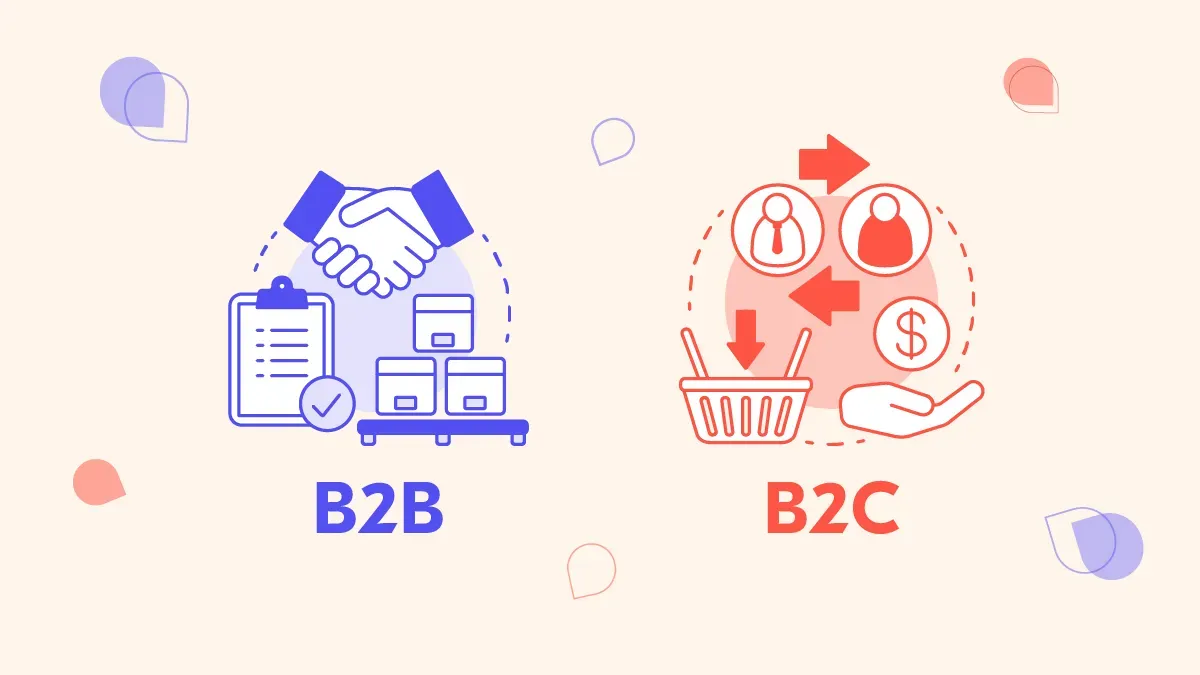
- Target Audience: B2B marketing targets businesses and professional buyers, whereas B2C marketing targets individual consumers. This fundamental difference shapes the entire marketing approach, from messaging to channel selection.
- Customer Relationships: In B2B marketing, relationships are built over time and are often long-term, involving multiple interactions and touchpoints. B2C marketing, on the other hand, typically focuses on shorter, more transactional relationships.
- Content and Messaging: B2B omnichannel marketing requires content that is informative, technical, and value-driven to address the specific needs and pain points of businesses. B2C marketing tends to be more emotional and focuses on lifestyle and personal benefits.
- Channels: B2B omnichannel marketing often utilizes channels such as LinkedIn, industry-specific events, webinars, and whitepapers. B2C marketing leverages more consumer-focused channels like Instagram, Facebook, and retail stores.
Decision-Making Processes
One of the most critical differences between B2B and B2C omnichannel marketing lies in the decision-making processes.
- B2B Decision-Making: The decision-making process in B2B marketing is typically complex and involves multiple stakeholders. These stakeholders may include procurement teams, technical experts, financial officers, and top executives. Each stakeholder has unique priorities and concerns that must be addressed through targeted messaging and content.
- B2C Decision-Making: In contrast, B2C decision-making usually involves a single consumer or a household. The process is generally quicker and influenced by personal preferences, emotions, and immediate needs.
- Implications for B2B Omnichannel Marketing: B2B omnichannel marketing strategies must account for the multi-faceted decision-making process by providing detailed, technical information and demonstrating value to various stakeholders. This involves creating a variety of content types, such as in-depth case studies, ROI calculators, and expert testimonials, and distributing them across the appropriate channels.
Length of the Sales Cycle
The sales cycle in B2B marketing is significantly longer and more involved compared to B2C.
- B2B Sales Cycle: B2B sales cycles can span months or even years, as businesses take time to research, evaluate, and compare solutions before making a purchase. This extended cycle requires sustained engagement and nurturing through multiple touchpoints.
- B2C Sales Cycle: B2C sales cycles are generally shorter, often occurring within days or weeks. Consumers make quicker purchasing decisions based on immediate needs or desires.
- Implications for B2B Omnichannel Marketing: Given the longer sales cycle in B2B, omnichannel marketing must focus on long-term engagement. This includes nurturing leads through regular follow-ups, providing continuous value through informative content, and maintaining visibility across all relevant channels. Marketing automation and CRM systems play a crucial role in managing and optimizing these long-term interactions.
Complexity and Personalization
B2B omnichannel marketing is inherently more complex and requires a higher degree of personalization compared to B2C.
- Complexity: B2B marketing involves complex products and services that require detailed explanations and demonstrations. The complexity is further increased by the need to address the specific needs of various stakeholders within a client organization.
- Personalization: Personalization in B2B marketing goes beyond addressing the recipient by name. It involves tailoring content and messaging to the unique challenges, industry-specific issues, and business objectives of each client. This level of personalization requires deep insights into the client’s business and effective use of data analytics.
- B2C Personalization: In B2C marketing, personalization often involves recommendations based on past purchases, browsing behavior, and demographic data. While still important, the degree of complexity is generally lower than in B2B.
- Implications for B2B Omnichannel Marketing: Effective B2B omnichannel marketing strategies must leverage advanced data analytics and marketing automation to deliver highly personalized experiences. This includes customized email campaigns, personalized content recommendations, and targeted advertising that addresses the specific needs and pain points of each client. Additionally, account-based marketing (ABM) strategies can be employed to focus on high-value accounts with tailored marketing efforts.
In summary, while the overarching principles of omnichannel marketing apply to both B2B and B2C contexts, the implementation differs significantly. B2B omnichannel marketing requires a deeper focus on relationship-building, long-term engagement, and high levels of personalization to address the complex decision-making processes and extended sales cycles typical of B2B transactions. By understanding these differences, businesses can develop more effective omnichannel marketing strategies that cater to the unique needs of their B2B clients, driving better engagement, higher conversion rates, and stronger customer loyalty.
Key Channels in B2B Omnichannel Marketing
Digital Channel
Website and SEO
A company’s website is often the first point of contact for potential B2B clients and serves as the central hub for all digital marketing activities. Optimizing the website for search engines (SEO) ensures that it attracts the right audience and provides valuable information to support the buyer’s journey.
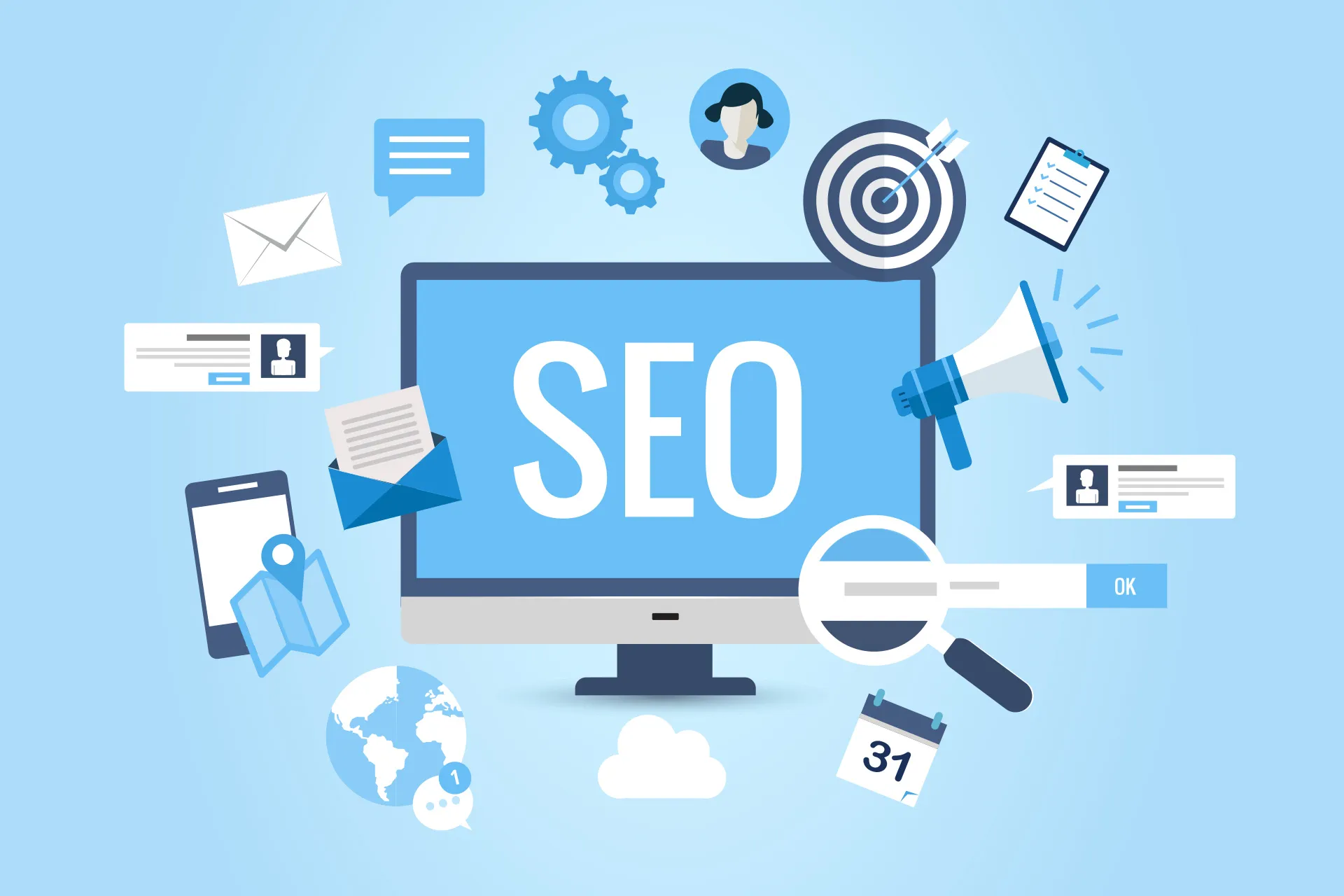
Website as a Central Hub:
- Information Repository: The website should host a comprehensive range of content, including product information, case studies, whitepapers, blog posts, and FAQs. This content must address the needs and pain points of B2B buyers at different stages of their journey.
- User Experience (UX): A seamless and intuitive user experience is critical. This includes easy navigation, fast loading times, mobile responsiveness, and clear calls to action (CTAs). A well-designed website can significantly enhance user engagement and conversion rates.
- Lead Generation: The website should incorporate lead generation forms, chatbots, and contact options to capture visitor information and initiate further engagement. Integrating CRM systems can streamline this process, ensuring that leads are nurtured efficiently.
SEO Strategies for B2B:
- Keyword Research: Identifying and targeting relevant keywords is the foundation of effective SEO. This involves understanding the terminology and phrases that potential clients use when searching for solutions to their problems.
- On-Page SEO: Optimizing individual web pages involves using targeted keywords in titles, headers, meta descriptions, and content. Additionally, ensuring that the website’s structure is logical and that internal linking is effective can improve search engine rankings.
- Content Marketing: High-quality, informative content that addresses the specific needs of B2B audiences can drive organic traffic. Regularly updating the blog with articles, case studies, and industry insights not only boosts SEO but also positions the company as a thought leader.
- Technical SEO: Technical aspects such as site speed, mobile optimization, secure HTTPS connections, and XML sitemaps are crucial for maintaining and improving search engine rankings.
- Backlink Building: Acquiring backlinks from reputable industry websites and publications can significantly enhance the website’s authority and search engine visibility.
Email Marketing
Email marketing remains one of the most effective channels in B2B omnichannel marketing. It allows for direct and personalized communication with potential and existing clients, facilitating lead nurturing and relationship building.
Building an Email List:
- Lead Magnets: Offering valuable resources such as eBooks, whitepapers, and webinars in exchange for email addresses can help grow a targeted email list.
- Opt-In Forms: Strategically placing opt-in forms on the website and landing pages encourages visitors to subscribe. Ensuring these forms are simple and privacy-compliant is essential.
Segmentation and Personalization:
- Segmentation: Dividing the email list into segments based on criteria such as industry, job role, company size, and stage in the buyer journey allows for more targeted and relevant messaging.
- Personalization: Personalized emails that address the recipient by name and tailor content to their specific needs and interests can significantly increase engagement and conversion rates.
Automated Campaigns:
- Drip Campaigns: Automated drip campaigns deliver a series of emails based on the recipient’s actions and behaviors. These campaigns can nurture leads through the buyer journey by providing relevant information and prompts at the right time.
- Behavioral Triggers: Setting up triggers based on user behavior, such as website visits, downloads, and email interactions, ensures timely and relevant follow-ups.
Content and Design:
- Valuable Content: Providing informative and useful content in emails, such as industry insights, product updates, and case studies, can engage recipients and build trust.
- Responsive Design: Ensuring that emails are visually appealing and optimized for both desktop and mobile devices enhances the user experience and increases the likelihood of engagement.
Analytics and Optimization:
- Tracking Metrics: Monitoring key metrics such as open rates, click-through rates, and conversion rates helps assess the effectiveness of email campaigns.
- A/B Testing: Conducting A/B tests on subject lines, content, and CTAs can provide insights into what resonates best with the audience, enabling continuous optimization of email strategies.
Social Media Platforms (LinkedIn, Twitter, etc.)
Social media platforms are indispensable in B2B omnichannel marketing for building brand awareness, engaging with prospects, and driving traffic to the website. LinkedIn and Twitter, in particular, offer unique advantages for B2B marketers.
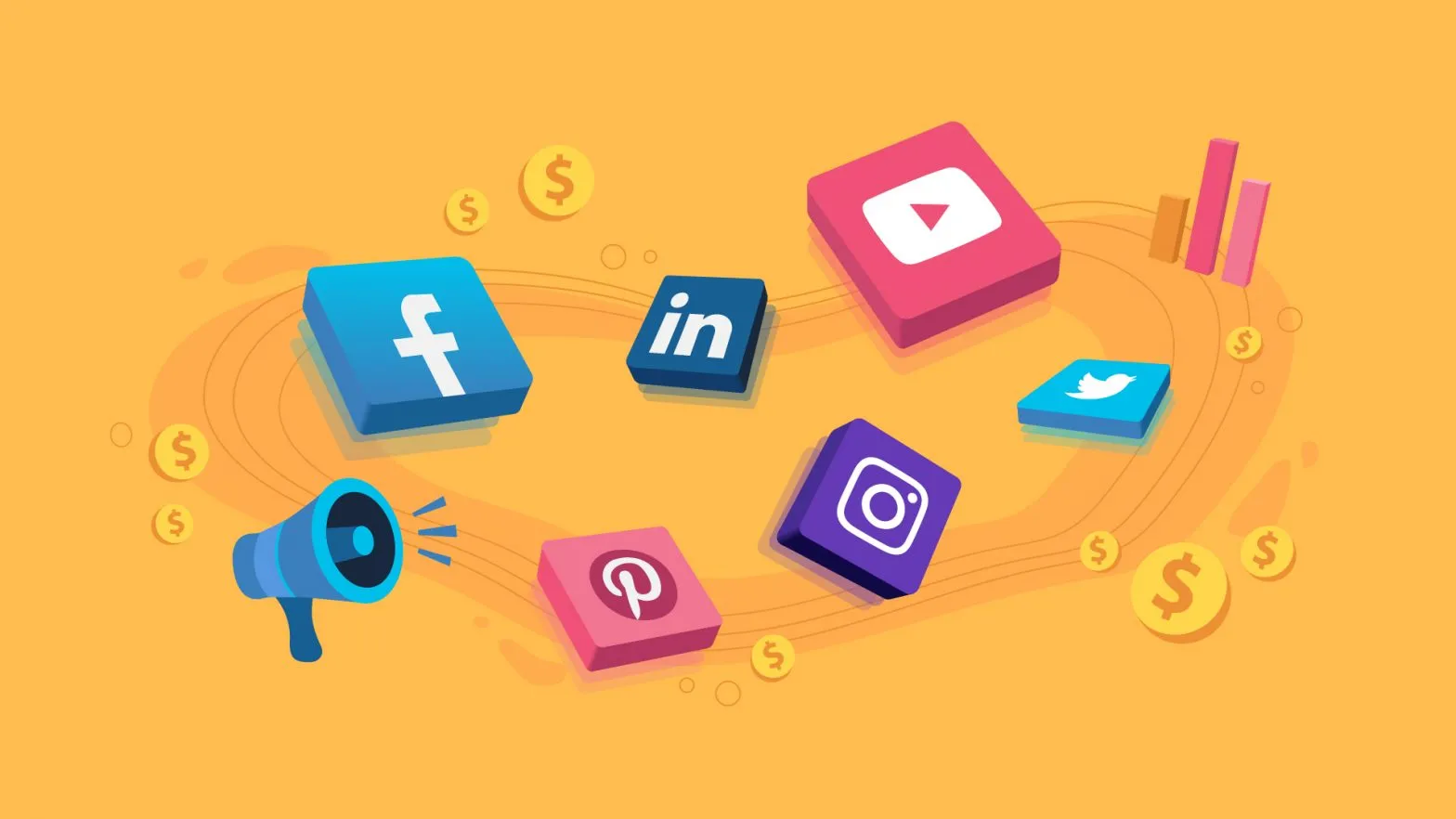
LinkedIn:
- Professional Networking: LinkedIn is the premier platform for B2B networking. Companies can connect with potential clients, partners, and industry influencers, facilitating relationship building and lead generation.
- Content Sharing: Sharing valuable content such as articles, case studies, and industry insights can position the company as a thought leader. LinkedIn’s publishing platform allows for long-form content that can attract significant engagement.
- Targeted Advertising: LinkedIn’s advanced targeting options enable businesses to reach specific audiences based on criteria such as job title, industry, and company size. Sponsored content, InMail, and display ads can effectively promote products and services to a highly targeted audience.
- Engagement and Interaction: Participating in LinkedIn groups, commenting on industry discussions, and engaging with followers can enhance visibility and credibility.
Twitter:
- Real-Time Engagement: Twitter’s fast-paced environment is ideal for real-time engagement and sharing timely content. Businesses can use Twitter to announce product updates, share industry news, and participate in trending discussions.
- Content Distribution: Sharing blog posts, whitepapers, and event information can drive traffic to the website. Using relevant hashtags can increase the visibility of tweets to a broader audience.
- Customer Interaction: Twitter provides a platform for direct interaction with customers and prospects. Responding to queries, participating in conversations, and showcasing customer success stories can build a positive brand image.
- Advertising Options: Twitter offers various advertising options, including promoted tweets and accounts, which can help increase visibility and engagement.
Other Social Media Platforms:
- Facebook: While traditionally seen as a B2C platform, Facebook can be valuable for B2B marketing, especially for brand awareness and community building. Facebook Ads can target specific business demographics, and Facebook Groups can facilitate discussions and networking.
- YouTube: Video content is increasingly important in B2B marketing. Hosting webinars, product demos, and educational content on YouTube can enhance engagement and provide valuable resources for potential clients.
- Instagram: Although less commonly used in B2B, Instagram can be effective for showcasing company culture, behind-the-scenes content, and visual storytelling.
Digital channels are integral to the success of B2B omnichannel marketing. Integrating these channels ensures that marketing efforts are aligned, consistent, and impactful, driving better engagement, higher conversion rates, and stronger customer relationships. As digital landscapes continue to evolve, staying updated with the latest trends and technologies will be crucial for maintaining a competitive edge in B2B omnichannel marketing.
Traditional Channel
Even in B2B omnichannel marketing, traditional channels continue to play a critical role alongside digital strategies. Integrating these traditional channels with digital efforts ensures a holistic approach that can effectively engage potential clients at various stages of their buyer journey. This section explores the importance and application of trade shows and events, direct mail, and print advertising in B2B omnichannel marketing.
Trade Shows and Events
Trade shows and events are pivotal in B2B omnichannel marketing, offering unique opportunities for face-to-face interactions, relationship building, and brand exposure. These channels are particularly valuable for networking, demonstrating products, and gathering insights directly from potential customers.
Networking and Relationship Building:
- Personal Interaction: Trade shows and events provide a platform for direct interaction with potential clients, partners, and industry influencers. Personal interactions foster trust and rapport, which are essential in B2B relationships.
- Lead Generation: These events are fertile ground for generating leads. Attendees are often decision-makers or influencers in their organizations, making them high-quality prospects.
- Follow-Up Opportunities: Collecting contact information during these events allows for targeted follow-up through other channels like email marketing and direct mail, reinforcing connections made in person.
Product Demonstrations and Showcases:
- Hands-On Experience: Demonstrating products or services in a live setting allows potential clients to see and experience the offerings firsthand. This can significantly influence their perception and interest.
- Interactive Presentations: Engaging presentations, workshops, and hands-on sessions can attract and retain attention, providing in-depth information about the products and their benefits.
Brand Exposure and Thought Leadership:
- Exhibit Booths: Well-designed exhibit booths can enhance brand visibility and attract attendees. These booths should be interactive and informative, showcasing the brand’s value proposition effectively.
- Speaking Opportunities: Securing speaking slots at industry events allows companies to share their expertise and position themselves as thought leaders. Presenting on relevant topics can draw attention and generate interest in the brand’s offerings.
- Sponsorships: Sponsoring events or specific segments within events can further enhance brand visibility and demonstrate commitment to the industry.
Data Collection and Insights:
- Surveys and Feedback: Conducting surveys and gathering feedback during events can provide valuable insights into customer needs and preferences. This information can inform future marketing strategies.
- Behavioral Data: Observing attendee behavior, such as which booths they visit and what questions they ask, can offer insights into market trends and interests.
Integration with Digital Channels:
- Pre-Event Marketing: Promoting participation in trade shows and events through email campaigns, social media, and the company website can increase attendance and engagement.
- Post-Event Follow-Up: Integrating event data with CRM systems enables personalized follow-up communications. Sharing event highlights, recordings of presentations, and additional resources can keep the engagement going.
- Live Streaming and Virtual Participation: Offering virtual attendance options through live streaming or recorded sessions can extend the reach of the event beyond physical attendees.
Direct Mail
Despite the rise of digital marketing, direct mail remains a powerful tool in B2B omnichannel marketing. It offers a tangible, personalized touch that can stand out in an increasingly digital world.

Personalization and Targeting:
- Tailored Messaging: Direct mail allows for highly personalized messaging. Customizing content based on the recipient’s role, company, and industry can significantly enhance relevance and impact.
- Segmented Campaigns: Segmenting the mailing list based on specific criteria ensures that the right message reaches the right audience. This increases the likelihood of engagement and response.
Physical Tangibility:
- Memorability: Physical mail stands out and can be more memorable than digital messages, which are often quickly deleted or ignored. High-quality materials and creative designs can make a lasting impression.
- Longevity: Direct mail tends to have a longer shelf life, as recipients may keep physical items on their desks or bulletin boards for future reference.
Complementing Digital Efforts:
- Integrated Campaigns: Combining direct mail with digital marketing efforts can create a cohesive and reinforced message. For example, sending a direct mail piece followed by an email can increase response rates.
- QR Codes and Personalized URLs: Including QR codes or personalized URLs (PURLs) in direct mail can bridge the gap between physical and digital channels. These elements drive recipients to customized landing pages, allowing for detailed tracking and further engagement.
Applications and Use Cases:
- Event Invitations: Sending physical invitations to trade shows, webinars, or company events can add a personal touch and increase attendance.
- Product Samples and Brochures: Providing physical samples or detailed brochures through direct mail can help potential clients better understand and evaluate the offerings.
- Customer Retention: Sending thank-you notes, holiday cards, or personalized gifts can strengthen relationships with existing clients and enhance customer loyalty.
Measuring Effectiveness:
- Tracking Codes and Response Mechanisms: Including tracking codes, response cards, or special offers in direct mail can help measure the effectiveness of the campaign.
- Follow-Up and Analysis: Analyzing response rates and follow-up engagement provides insights into the success of direct mail efforts and informs future strategies.
Print Advertising
Print advertising remains a viable channel in B2B omnichannel marketing, particularly for reaching niche audiences and establishing credibility.
Targeted Reach:
- Industry Publications: Advertising in industry-specific magazines and journals ensures that the message reaches a highly targeted audience. These readers are often decision-makers and influencers within their organizations.
- Trade Show Guides and Programs: Placing ads in trade show guides, programs, and directories can capture the attention of event attendees who are actively seeking information and solutions.
Credibility and Authority:
- Reputation: Print publications, especially established industry journals, often carry a sense of authority and credibility. Being featured in these publications can enhance the perceived trustworthiness of the brand.
- Thought Leadership: Contributing articles, whitepapers, or expert opinions to industry publications can position the company as a thought leader and generate interest in its offerings.
Visual Impact:
- High-Quality Design: Well-designed print ads with compelling visuals and clear messaging can capture attention and leave a lasting impression. High-resolution images, professional layouts, and strong calls to action are essential.
- Brand Consistency: Maintaining consistent branding across print and digital channels reinforces brand identity and ensures a cohesive omnichannel experience.
Complementing Digital Strategies:
- Integrated Campaigns: Coordinating print advertising with digital marketing efforts ensures a unified message. For example, a print ad can promote a downloadable resource or event, directing readers to a dedicated landing page.
- Tracking and Analytics: Including tracking mechanisms such as unique URLs, promo codes, or dedicated phone numbers in print ads allows for tracking responses and measuring ROI.
Applications and Use Cases:
- Product Launches: Announcing new products or services through print ads in relevant publications can generate awareness and interest among targeted audiences.
- Corporate Announcements: Sharing significant company news, such as mergers, acquisitions, or awards, through print media can enhance corporate reputation.
Though no longer a priority in today’s business market; traditional channels remain integral to B2B omnichannel marketing, providing valuable opportunities for direct engagement, relationship building, and brand visibility. By integrating trade shows and events, direct mail, and print advertising with digital strategies, businesses can create a cohesive and comprehensive marketing approach that effectively reaches and engages B2B audiences.
Emerging Channels
Webinars and Virtual Events
Webinars and virtual events have become cornerstones of B2B omnichannel marketing. They provide a powerful platform for businesses to connect with a wide audience, share valuable insights, and establish thought leadership.
Educational Content Delivery:
- In-Depth Presentations: Webinars allow companies to present detailed information on complex topics. This is particularly useful for B2B companies that need to explain technical products, industry trends, or intricate services. Educational content helps position the company as an authority in its field.
- Interactive Q&A Sessions: Incorporating live Q&A sessions in webinars enables real-time interaction with attendees. This interactivity not only engages the audience but also provides immediate value by addressing specific questions and concerns.
Lead Generation and Nurturing:
- Registration Data: Collecting registration information for webinars provides a valuable database of potential leads. This data can be used for targeted follow-up campaigns and lead nurturing.
- Post-Event Engagement: Sending follow-up emails with recordings, additional resources, and invitations to future events keeps the audience engaged and helps move leads further down the sales funnel.
Global Reach and Accessibility:
- Broad Audience: Virtual events eliminate geographical barriers, allowing businesses to reach a global audience. This expands the potential client base and increases brand visibility.
- On-Demand Access: Recording webinars and making them available on-demand ensures that content is accessible to those who could not attend live. This extends the lifespan and impact of the event.
Cost-Effective and Measurable:
- Lower Costs: Compared to physical events, webinars and virtual events are more cost-effective. They save on travel, venue, and accommodation expenses while still delivering significant value.
- Analytics and Feedback: Detailed analytics on attendee engagement, such as attendance rates, participation in polls, and Q&A activity, provide insights into the event’s effectiveness. Feedback surveys can further refine future events.
Podcasting
Podcasting is an emerging channel in B2B omnichannel marketing that offers a unique way to reach and engage with audiences through audio content. Podcasts are convenient for busy professionals who can listen while commuting, exercising, or working.
Thought Leadership and Authority:
- Expert Interviews: Featuring industry experts and thought leaders on podcasts can enhance the company’s credibility and authority. These interviews provide valuable insights and foster trust with the audience.
- Regular Content: Consistent podcast episodes on relevant topics help maintain ongoing engagement with the audience. It positions the company as a go-to source for industry knowledge and trends.
Accessibility and Convenience:
- On-Demand Listening: Podcasts offer on-demand content that listeners can consume at their convenience. This flexibility increases the likelihood of engagement and retention.
- Multi-Platform Distribution: Distributing podcasts across multiple platforms, such as Apple Podcasts, Spotify, and Google Podcasts, ensures broad accessibility and reach.
Engaging Storytelling:
- Narrative Format: Podcasts enable businesses to use storytelling techniques to convey their message. Engaging narratives can captivate listeners and make complex topics more relatable and understandable.
- Personal Connection: The audio format creates a personal connection with the audience, as listeners often develop a sense of familiarity with the hosts and guests.
Lead Generation and Nurturing:
- Call-to-Action (CTA): Including CTAs within podcast episodes encourages listeners to visit the company’s website, download resources, or contact sales representatives.
- Supporting Content: Complementing podcast episodes with related blog posts, whitepapers, and social media content can enhance the overall engagement strategy and provide additional value to listeners.
AI-Driven Chatbots and Virtual Assistants
AI-driven chatbots and virtual assistants are transforming B2B omnichannel marketing by providing instant, personalized interactions with potential and existing clients. These technologies enhance customer service, streamline processes, and improve engagement.
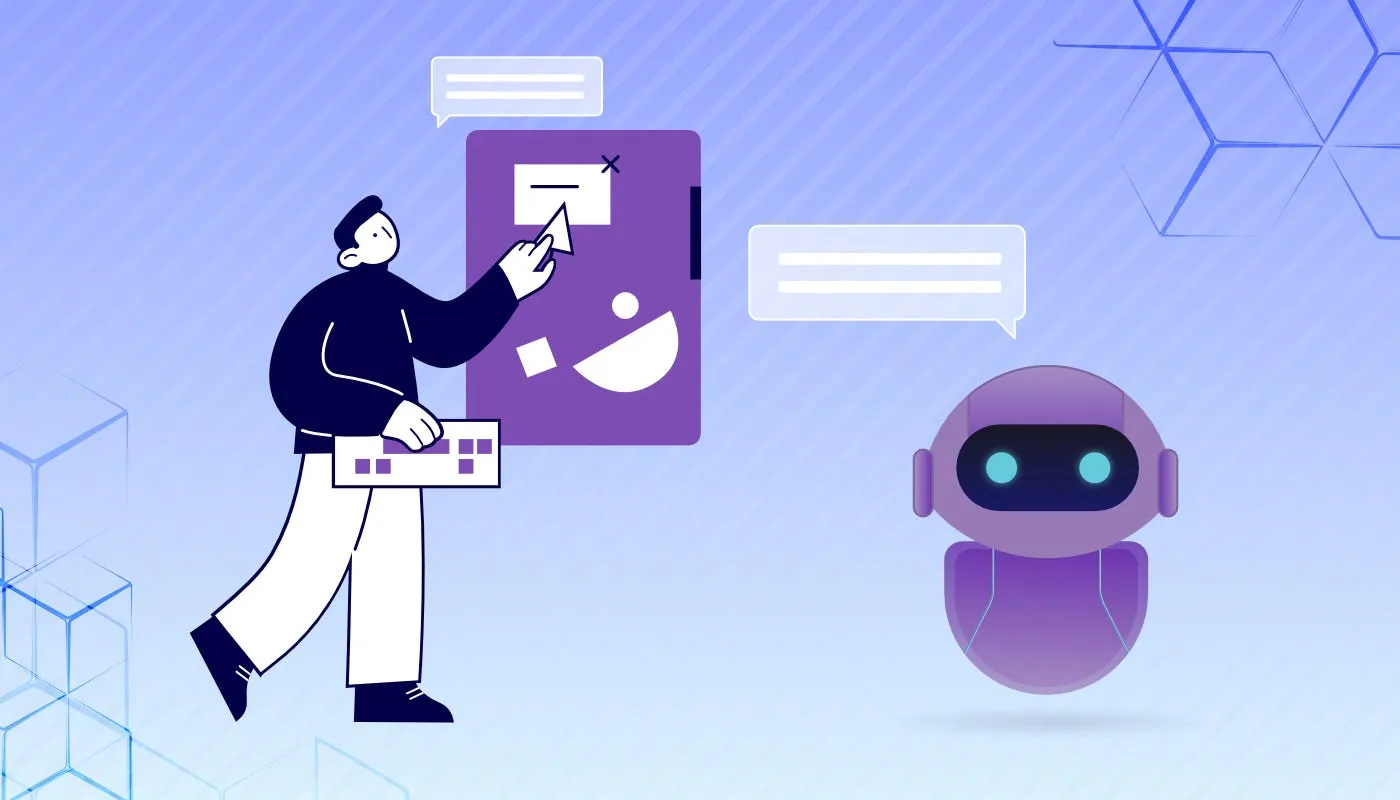
24/7 Customer Support:
- Instant Responses: Chatbots provide immediate responses to customer inquiries, ensuring that clients receive timely support regardless of time zones or business hours.
- Common Queries: By handling common queries and tasks, chatbots free up human agents to focus on more complex issues, improving overall efficiency.
Personalization and Engagement:
- Tailored Interactions: AI-driven chatbots can personalize interactions based on user data and previous interactions. This ensures that responses are relevant and contextually appropriate, enhancing the customer experience.
- Proactive Engagement: Chatbots can initiate conversations based on user behavior, such as time spent on a page or previous visits. Proactive engagement helps in capturing leads and guiding them through the sales funnel.
Lead Qualification and Nurturing:
- Initial Qualification: Chatbots can qualify leads by asking targeted questions and collecting essential information. This initial qualification helps in prioritizing leads for follow-up by the sales team.
- Automated Nurturing: Automated follow-ups and nurturing sequences can be implemented through chatbots, keeping potential clients engaged until they are ready to interact with a human representative.
Integration with CRM and Marketing Automation:
- Seamless Integration: Integrating chatbots with CRM systems and marketing automation platforms ensures that data is synchronized and workflows are streamlined. This integration supports personalized marketing efforts and effective lead management.
- Data Collection and Insights: Chatbots collect valuable data on user interactions, preferences, and behavior. This data can be analyzed to gain insights and improve marketing strategies.
Cost-Effective and Scalable:
- Scalability: Chatbots can handle multiple interactions simultaneously, making them highly scalable solutions for growing businesses.
- Cost Savings: Implementing chatbots reduces the need for extensive customer service teams, resulting in cost savings while maintaining high levels of customer support.
Emerging channels such as webinars and virtual events, podcasting, and AI-driven chatbots and virtual assistants are integral to modern B2B omnichannel marketing. These channels provide innovative ways to engage with potential clients, deliver valuable content, and enhance the overall customer experience. By incorporating these emerging channels into their omnichannel strategies, businesses can create a comprehensive and cohesive approach that drives better engagement, higher conversion rates, and stronger customer relationships.
Developing a B2B Omnichannel Marketing Strategy
Market Research and Audience Segmentation
Identifying Target Audiences
Identifying your target audience is crucial for the success of any B2B omnichannel marketing strategy. This involves gathering and analyzing data to understand the characteristics, needs, and behaviors of your potential clients.
- Customer Data Analysis: Start by examining your existing customer base. Look at demographic information such as industry, company size, and job roles. Behavioral data, including purchase history and website interactions, can also provide valuable insights into your current customers’ needs and preferences. This data helps identify patterns and common traits among your most valuable clients.
- Market Research: Utilize market research reports, industry studies, and competitor analysis to gain insights into the broader market landscape. This research can reveal emerging trends, market demands, and potential target segments. Understanding the competitive environment helps in positioning your offerings more effectively.
- Understanding Business Needs: Identify the specific pain points and challenges that potential clients face. This involves understanding their business processes, goals, and obstacles. Knowing what problems your product or service can solve is crucial for targeting the right audience. Conducting surveys, interviews, and focus groups with current and potential customers can provide deeper insights into their needs and expectations.
- Solution Fit: Assess how your product or service fits into the potential clients’ needs. Highlight the unique value proposition and benefits that your offering provides. Understanding the solution fit helps in crafting messages that resonate with your target audience and address their specific pain points.
- Competitive Analysis: Analyze your competitors to understand their target audiences and marketing strategies. This can help identify gaps in the market and opportunities for differentiation. Look at the channels they use, the messages they convey, and the audience segments they target.
- Segmentation Criteria: Define clear criteria for segmenting your audience. Common segmentation criteria in B2B markets include industry, company size, geographic location, and job role. Advanced segmentation can also consider factors such as buying behavior, technology adoption, and business challenges.
Creating Detailed Buyer Personas
Creating detailed buyer personas is a crucial step in B2B omnichannel marketing. Buyer personas are semi-fictional representations of your ideal customers, based on data and research. They help in understanding and empathizing with your target audience, guiding marketing strategies and content creation.
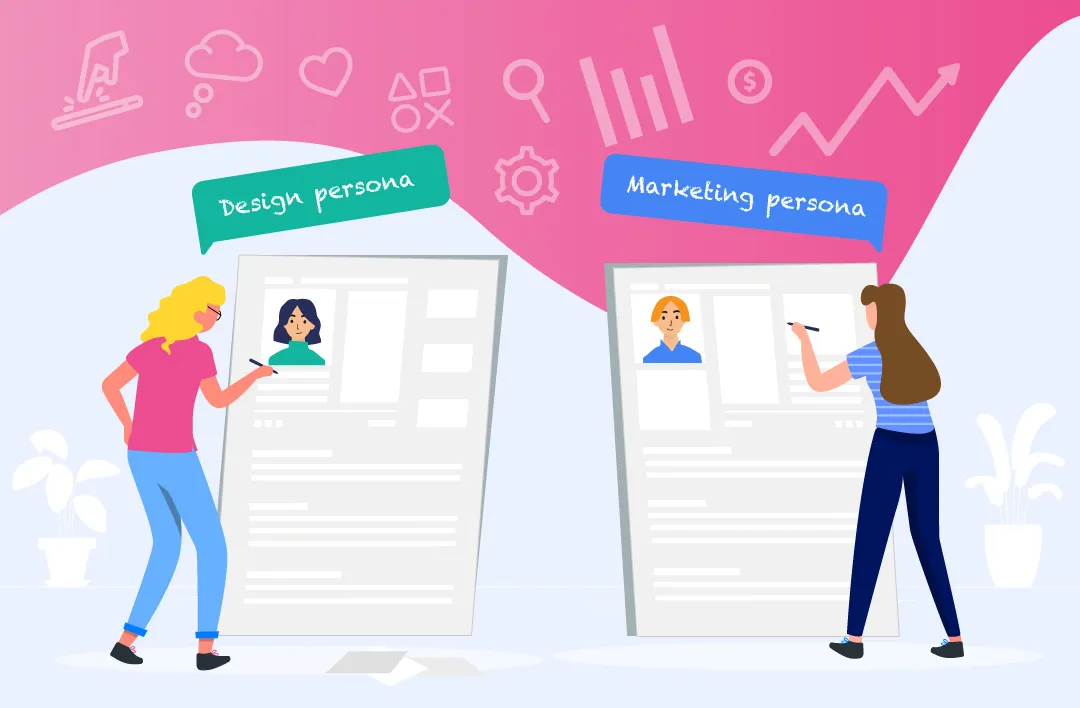
- Persona Development: Begin by developing detailed profiles of your ideal customers. Each persona should include basic demographic information (e.g., job title, company size, industry) and more specific details such as job responsibilities, goals, and challenges. Use real data from your existing customers to ensure accuracy and relevance.
- Personal Background: Include personal background information that might influence their buying decisions, such as education, career path, and personal motivations. Understanding their background helps in crafting messages that resonate on a personal level.
- Business Challenges: Identify the key business challenges and pain points that each persona faces. This includes understanding their day-to-day responsibilities and the problems they need to solve. Knowing their challenges helps in positioning your product or service as a solution to their specific needs.
- Buying Behavior: Understand the buying behavior of each persona. This includes their decision-making process, the information they seek, and the channels they prefer for communication. Knowing how they make purchasing decisions helps in creating targeted marketing campaigns.
- Content Preferences: Determine the types of content each persona prefers and the channels they use to consume information. Some personas might prefer detailed whitepapers and case studies, while others might engage more with video content and webinars. Aligning content with their preferences ensures higher engagement and effectiveness.
- Goals and Motivations: Identify the goals and motivations driving each persona. This includes understanding what success looks like for them and what they aim to achieve in their roles. Aligning your messaging with their goals helps in demonstrating how your solution can help them succeed.
- Objections and Concerns: Anticipate common objections and concerns that each persona might have about your product or service. Addressing these objections proactively in your marketing materials can help overcome barriers to purchase.
- Communication Preferences: Understand how each persona prefers to communicate. This includes their preferred channels (e.g., email, phone, social media) and the tone and style of communication they respond to best. Tailoring your communication strategy to their preferences enhances the effectiveness of your marketing efforts.
- Persona Validation: Validate your buyer personas by testing them with real customers. Gather feedback to refine and improve the personas, ensuring they accurately represent your target audience. Continuous validation and updating of personas keep them relevant and useful for guiding marketing strategies.
Channel Integration and Alignment
Ensuring Consistency Across Channels
Consistency across channels is fundamental to building trust and credibility with B2B buyers. Inconsistent messaging, branding, or customer experience can confuse and alienate potential clients.
- Unified Brand Messaging: Ensure that your brand messaging is consistent across all channels, including your website, social media, email campaigns, print materials, and in-person interactions. This includes using the same tone, voice, and visual elements to reinforce your brand identity. Develop comprehensive brand guidelines that outline your brand’s messaging, style, and visual identity to maintain consistency.
- Centralized Content Management: Utilize a centralized content management system (CMS) to manage and distribute content across various channels. A CMS helps ensure that all content is up-to-date and consistent, regardless of where it is published. This centralized approach also makes it easier to update and repurpose content for different channels.
- Cross-Channel Campaigns: Plan and execute marketing campaigns that span multiple channels. Ensure that each channel reinforces the same core message and objectives. For example, a product launch campaign might include a coordinated effort involving email newsletters, social media posts, blog articles, webinars, and direct mail. Aligning these efforts ensures a cohesive and powerful impact.
- Customer Experience Mapping: Map out the customer journey to identify all potential touchpoints and interactions a customer may have with your brand. Ensure that each touchpoint delivers a consistent and positive experience. This includes aligning your customer service, sales, and marketing teams to provide a seamless experience from initial contact to post-purchase support.
- Training and Alignment: Ensure that all employees involved in customer interactions, including sales, customer service, and marketing teams, are trained on your brand messaging and values. Regular training sessions and internal communications can help align everyone with your brand’s objectives and ensure consistency in customer interactions.
- Feedback and Improvement: Continuously gather feedback from customers and internal teams to identify inconsistencies and areas for improvement. Use this feedback to refine your strategies and ensure that your messaging and customer experience remain consistent and aligned with your brand values.
Integrating Online and Offline Channels
Integrating online and offline channels is crucial for creating a seamless B2B omnichannel marketing strategy. B2B buyers often interact with brands across various touchpoints, both digital and physical. Integrating these channels ensures that customers have a cohesive experience, regardless of how they choose to engage with your brand.
- Omnichannel CRM Systems: Implement a CRM system that integrates data from both online and offline channels. This unified view of customer interactions helps in understanding the complete customer journey and personalizing marketing efforts. An integrated CRM system enables sales and marketing teams to access the same information, ensuring coordinated efforts.
- Data Synchronization: Ensure that data from all channels is synchronized and up-to-date. This includes integrating data from your website, social media platforms, email marketing tools, CRM systems, and offline sources such as trade shows and in-person meetings. Data synchronization helps in providing a consistent and personalized experience across all touchpoints.
- Personalized Marketing: Use the integrated data to personalize marketing efforts across all channels. Personalization can include tailored content, targeted ads, personalized email campaigns, and customized product recommendations. Personalized marketing helps in building stronger relationships with potential clients and enhancing their overall experience.
- Unified Customer Profiles: Create unified customer profiles that include information from both online and offline interactions. These profiles provide a comprehensive view of each customer’s preferences, behaviors, and needs. Unified profiles help in delivering relevant and timely marketing messages that resonate with potential clients.
- Cross-Channel Campaign Coordination: Plan and execute marketing campaigns that leverage both online and offline channels. For example, a trade show event can be promoted through email campaigns, social media posts, and direct mail. During the event, capture attendee information and follow up with personalized emails and online content. Coordinating efforts across channels ensures a cohesive and impactful campaign.
- Seamless Transitions: Ensure that customers can seamlessly transition between online and offline interactions. For example, if a customer starts their journey by researching products online, they should be able to easily transition to speaking with a sales representative in person or over the phone. Providing a consistent experience across channels helps in building trust and confidence in your brand.
- Integrated Customer Support: Offer integrated customer support that spans both online and offline channels. This includes providing support through email, chat, phone, and in-person interactions. Ensure that customer support teams have access to the same information and can provide consistent and informed assistance.
- Measuring and Analyzing Performance: Measure and analyze the performance of your integrated marketing efforts across all channels. Use metrics such as engagement rates, conversion rates, and customer satisfaction to assess the effectiveness of your strategies. Analyzing performance helps in identifying areas for improvement and optimizing your omnichannel marketing approach.
Content Strategy for B2B Omnichannel Marketing
Creating Relevant and Engaging Content
In B2B omnichannel marketing, content serves as the bridge between your brand and potential clients. It is essential to create content that is not only relevant to your target audience but also engaging enough to capture and retain their attention.
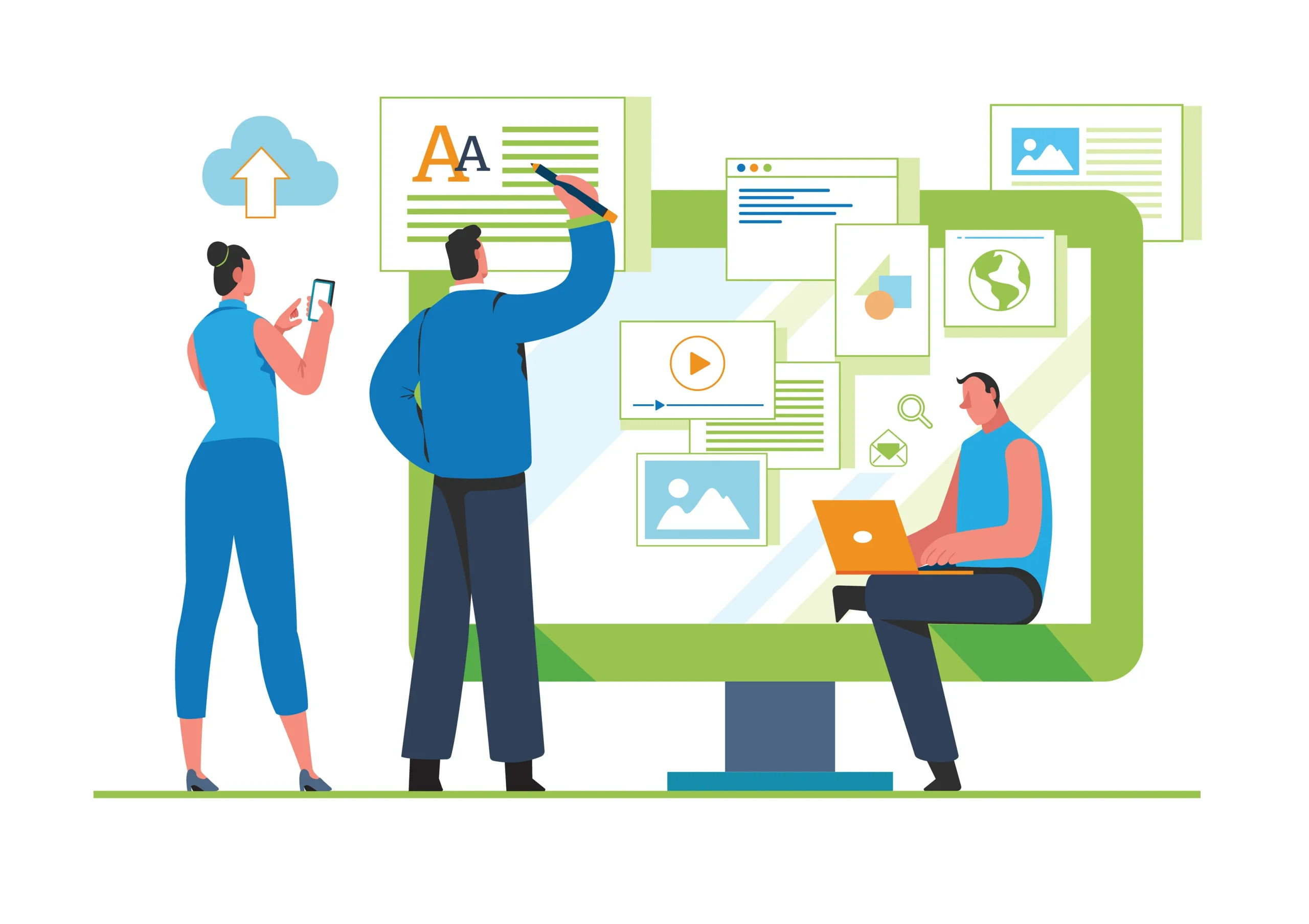
- Understanding Your Audience: The first step in creating relevant content is understanding your target audience. This involves conducting thorough market research and developing detailed buyer personas. Knowing the specific needs, challenges, and preferences of your audience allows you to create content that resonates with them.
- Content Types and Formats: Utilize a variety of content types and formats to keep your audience engaged. This can include blog posts, whitepapers, case studies, infographics, videos, podcasts, and webinars. Different formats cater to different preferences and help in reaching a broader audience.
- Educational and Value-Driven Content: B2B buyers are often looking for information that helps them solve problems and make informed decisions. Create educational content that provides value to your audience. This can include how-to guides, industry insights, research reports, and expert opinions. Providing valuable content positions your brand as a thought leader and builds trust with your audience.
- SEO and Discoverability: Optimize your content for search engines to ensure it is easily discoverable by your target audience. This involves conducting keyword research, using relevant keywords naturally within your content, and optimizing meta descriptions, headers, and images. High-ranking content increases visibility and drives organic traffic to your site.
- Interactive and Engaging Elements: Incorporate interactive elements into your content to increase engagement. This can include quizzes, surveys, calculators, and interactive infographics. Interactive content encourages active participation and can provide personalized insights to your audience.
- Consistency and Frequency: Maintain a consistent publishing schedule to keep your audience engaged. Regularly updated content keeps your brand top of mind and encourages repeat visits. Consistency also helps in building credibility and authority in your industry.
- Storytelling and Emotional Connection: Use storytelling techniques to make your content more relatable and memorable. Sharing success stories, customer testimonials, and real-life examples helps in creating an emotional connection with your audience. Stories are powerful tools for conveying complex information in an engaging and understandable way.
- Visual Appeal: Ensure that your content is visually appealing. Use high-quality images, videos, and graphics to enhance the readability and attractiveness of your content. A well-designed piece of content is more likely to capture attention and be shared.
Tailoring Content for Different Stages of the Buyer Journey
The B2B buyer journey typically involves several stages, each requiring different types of content to address the evolving needs of potential clients. Tailoring your content to these stages ensures that you provide the right information at the right time, guiding prospects through the journey and increasing the likelihood of conversion.
- Awareness Stage: At this stage, the goal is to attract potential clients and make them aware of your brand and the solutions you offer. Blog posts, social media content, infographics, and introductory videos work well at this stage. These content types should focus on addressing common pain points and providing high-level information about industry trends and challenges. Highlight the problems your target audience faces and introduce your brand as a potential solution provider. Avoid heavy sales pitches; instead, focus on building awareness and interest.
- Consideration Stage: In the consideration stage, potential clients are evaluating different options and seeking more detailed information. Case studies, whitepapers, eBooks, webinars, and comparison guides are effective. This content should provide in-depth information about your products or services and demonstrate how they can address specific challenges. Focus on showcasing the benefits and features of your solutions. Provide detailed insights into how your offerings compare with competitors and how they can solve the audience’s problems.
- Decision Stage: The decision stage is where potential clients are ready to make a purchase decision. They need final reassurances and detailed information to choose your solution over others. Product demos, free trials, consultations, testimonials, and ROI calculators are crucial. This content should provide concrete evidence of the value and effectiveness of your solutions. Highlight success stories and customer testimonials to build trust. Provide clear and compelling calls-to-action (CTAs) that encourage prospects to take the final step towards purchase.
- Purchase Stage: Facilitate the purchasing process and ensure a smooth transition from prospect to customer. Clear pricing information, implementation guides, onboarding materials, and customer support resources are important at this stage. Ensure that the purchasing process is straightforward and transparent. Provide all necessary information to help the customer make an informed decision and feel confident in their choice.
- Post-Purchase Stage: Retain customers and foster long-term relationships. Encourage repeat business and advocacy. Follow-up emails, customer success stories, loyalty programs, and ongoing support content are essential. Provide resources that help customers maximize the value of your solutions. Focus on building long-term relationships and ensuring customer satisfaction. Encourage feedback and provide opportunities for customers to share their experiences.
- Advocacy Stage: Turn satisfied customers into brand advocates who can influence others and generate new leads. Referral programs, case study interviews, and review requests can help leverage customer advocacy. Highlight the benefits of being a brand advocate and provide incentives for referrals. Showcase customer success stories and encourage sharing their positive experiences.
A well-crafted content strategy is pivotal for successful B2B omnichannel marketing. By creating relevant and engaging content and tailoring it for different stages of the buyer journey, businesses can effectively attract, engage, and convert potential clients. This approach not only enhances the overall customer experience but also builds trust, drives higher conversion rates, and fosters long-term relationships.
Technology and Tools for Omnichannel Marketing
CRM Systems and Marketing Automation Tools
CRM systems and marketing automation tools are foundational to the success of B2B omnichannel marketing. These technologies streamline processes, enhance customer interactions, and improve overall marketing efficiency.
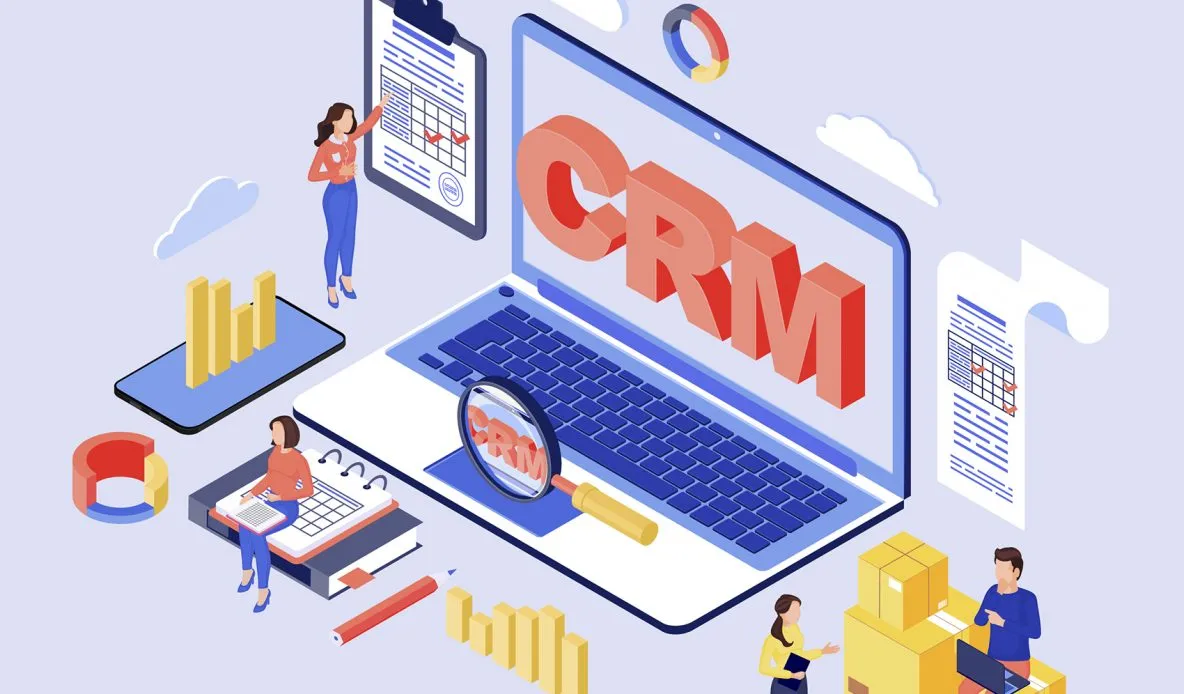
- Centralized Customer Data: CRM systems serve as a centralized repository for all customer data, including contact information, communication history, purchase history, and engagement metrics. This centralized data helps marketers understand their customers better and tailor marketing efforts to individual needs and preferences.
- 360-Degree Customer View: A robust CRM system provides a 360-degree view of each customer, integrating data from various touchpoints. This comprehensive view allows for personalized marketing strategies, ensuring that every interaction is relevant and timely.
- Segmentation and Targeting: CRM systems enable precise audience segmentation based on various criteria such as industry, company size, job role, and behavior. This segmentation allows for highly targeted marketing campaigns that resonate with specific audience segments, improving engagement and conversion rates.
- Lead Management and Nurturing: Effective lead management is crucial in B2B omnichannel marketing. CRM systems help track leads throughout the buyer journey, ensuring that they receive the right content at the right time. Marketing automation tools can nurture leads through automated workflows, sending personalized emails and content based on lead behavior and interactions.
- Automated Workflows: Marketing automation tools streamline repetitive tasks such as email campaigns, social media posts, and lead nurturing. Automated workflows save time and ensure consistent communication with prospects and customers, enhancing the efficiency of marketing efforts.
- Personalization at Scale: Marketing automation tools enable personalized communication at scale. By leveraging customer data from CRM systems, marketers can create personalized email campaigns, targeted ads, and customized content that address the unique needs and preferences of each customer.
- Campaign Management: CRM and marketing automation tools facilitate the planning, execution, and tracking of marketing campaigns. Marketers can create integrated campaigns that span multiple channels, ensuring a cohesive and consistent message across all touchpoints.
- Sales and Marketing Alignment: CRM systems bridge the gap between sales and marketing teams, ensuring that both teams have access to the same customer data. This alignment helps in creating a seamless customer experience and improves the overall effectiveness of marketing and sales efforts.
- Performance Metrics and Reporting: CRM and marketing automation tools provide detailed performance metrics and reporting capabilities. Marketers can track the success of their campaigns, measure key metrics such as open rates, click-through rates, and conversion rates, and optimize their strategies based on data-driven insights.
Data Analytics and Tracking Tools
Data analytics and tracking tools are indispensable in B2B omnichannel marketing. These tools provide insights into customer behavior, campaign performance, and market trends, enabling marketers to make informed decisions and optimize their strategies.
- Customer Insights: Data analytics tools help marketers gain deep insights into customer behavior and preferences. By analyzing data from various sources such as website interactions, social media engagement, and email responses, marketers can understand what drives customer actions and tailor their strategies accordingly.
- Behavioral Tracking: Tracking tools monitor customer behavior across different channels and touchpoints. This includes tracking website visits, content downloads, email opens, and social media interactions. Behavioral tracking provides valuable data on how customers interact with the brand, helping marketers identify opportunities for engagement and conversion.
- Predictive Analytics: Predictive analytics tools use historical data and machine learning algorithms to forecast future customer behavior. These tools can predict which leads are most likely to convert, which customers are at risk of churn, and which products or services are likely to be in demand. Predictive analytics helps in making proactive marketing decisions and optimizing resource allocation.
- Attribution Modeling: Attribution modeling tools help marketers understand the impact of different marketing channels on customer conversions. By analyzing the customer journey and assigning value to each touchpoint, marketers can identify the most effective channels and optimize their marketing mix for better ROI.
- A/B Testing: A/B testing tools enable marketers to test different versions of their campaigns, such as email subject lines, landing page designs, and ad creatives. By comparing the performance of different variations, marketers can identify what resonates best with their audience and refine their strategies for maximum impact.
- Real-Time Analytics: Real-time analytics tools provide up-to-the-minute data on campaign performance and customer interactions. Real-time insights allow marketers to make quick adjustments to their strategies, respond to customer actions promptly, and capitalize on emerging opportunities.
- Dashboards and Visualization: Data analytics tools often come with customizable dashboards and visualization capabilities. These features make it easy for marketers to interpret complex data, track KPIs, and communicate insights to stakeholders. Visual representations of data help in making informed decisions and demonstrating the impact of marketing efforts.
- Customer Journey Mapping: Analytics and tracking tools help in mapping the customer journey across different channels and touchpoints. Understanding the customer journey allows marketers to identify pain points, optimize interactions, and create a seamless and cohesive experience for their customers.
- Market Trends and Competitive Analysis: Data analytics tools provide insights into market trends and competitor activities. By analyzing industry data and monitoring competitors, marketers can stay ahead of market changes, identify new opportunities, and adjust their strategies to maintain a competitive edge.
- Compliance and Data Privacy: Ensuring compliance with data privacy regulations is critical in B2B marketing. Data analytics tools help marketers manage and protect customer data, ensuring that all data collection and processing activities comply with relevant regulations such as GDPR and CCPA.
Leveraging CRM systems and marketing automation tools, along with data analytics and tracking tools, is essential for developing an effective B2B omnichannel marketing strategy. These technologies enable marketers to gain deep insights into customer behavior, personalize their marketing efforts, and optimize their campaigns for better engagement and conversions.
Implementing B2B Omnichannel Marketing Campaigns
Campaign Planning and Execution
Setting Clear Goals and KPIs
Setting clear and measurable goals is the foundation of any successful B2B omnichannel marketing campaign. Goals provide direction and focus, while KPIs help track progress and measure success.

- Define Campaign Objectives: Start by defining the primary objectives of the campaign. These could include increasing brand awareness, generating leads, driving website traffic, or boosting sales. Having clear objectives helps in aligning efforts and resources towards achieving specific outcomes.
- SMART Goals: Ensure that the goals are SMART – Specific, Measurable, Achievable, Relevant, and Time-bound. For example, instead of setting a vague goal like increase leads, set a SMART goal such as increase the number of qualified leads by 20% within three months.
- Align with Business Goals: Ensure that the campaign goals align with the overall business objectives. This alignment helps in driving meaningful results that contribute to the company’s growth and success. For instance, if the business goal is to expand into new markets, the campaign might focus on generating leads in those specific regions.
- KPIs: KPIs are metrics that help measure the success of the campaign. Select KPIs that are directly tied to the campaign objectives. Common KPIs in B2B omnichannel marketing include:
- Lead generation metrics (e.g., number of leads, cost per lead)
- Engagement metrics (e.g., click-through rates, social media interactions)
- Conversion metrics (e.g., conversion rate, sales revenue)
- Customer acquisition cost (CAC)
- Return on investment (ROI)
- Customer lifetime value (CLV)
- Set Benchmarks and Targets: Establish benchmarks based on past performance and set realistic targets for each KPI. Benchmarks provide a baseline for comparison, while targets define the desired outcomes. Regularly review and adjust these targets based on campaign performance and market conditions.
- Use Data-Driven Insights: Leverage data analytics to inform goal-setting and KPI selection. Analyze historical data, industry trends, and competitor performance to set informed and achievable goals. Data-driven insights help in making realistic projections and identifying areas for improvement.
- Continuous Monitoring and Adjustment: Continuously monitor the KPIs throughout the campaign. Use real-time analytics to track performance and make necessary adjustments to optimize results. Regularly review progress against goals and make data-driven decisions to improve campaign effectiveness.
Coordinating Across Teams and Departments
Effective coordination across teams and departments is essential for the seamless execution of B2B omnichannel marketing campaigns. Collaboration ensures that all aspects of the campaign are aligned and executed efficiently. Here are strategies for ensuring effective coordination:
- Establish Clear Roles and Responsibilities: Define the roles and responsibilities of each team involved in the campaign. This includes marketing, sales, customer service, product development, and IT teams. Clear roles prevent overlaps and ensure that each team knows their specific tasks and contributions.
- Cross-Functional Teams: Create cross-functional teams that include members from different departments. These teams can work together to plan, execute, and monitor the campaign. Cross-functional collaboration enhances communication and ensures that all aspects of the campaign are covered.
- Centralized Campaign Management: Use a centralized campaign management system to coordinate efforts across teams. This system should include tools for project management, communication, and collaboration. Centralized management helps in tracking progress, sharing updates, and addressing issues promptly.
- Regular Communication: Schedule regular meetings and check-ins to discuss campaign progress, share updates, and address any challenges. Effective communication ensures that all teams are on the same page and can collaborate effectively. Use communication tools like Slack, Microsoft Teams, or project management software to facilitate ongoing communication.
- Unified Messaging and Branding: Ensure that all teams adhere to unified messaging and branding guidelines. Consistent messaging across all channels reinforces the brand identity and enhances the overall impact of the campaign. Provide teams with clear guidelines and templates to maintain consistency.
- Integrated Marketing Automation: Implement marketing automation tools that integrate with other systems used by different departments. Automation streamlines workflows, reduces manual tasks, and ensures that all teams have access to the same data. Integrated automation enhances efficiency and enables personalized marketing at scale.
- Sales and Marketing Alignment: Foster alignment between sales and marketing teams. Ensure that both teams have access to the same customer data and insights. Collaborate on lead generation and nurturing strategies to ensure a seamless transition from marketing to sales. Regularly share feedback and insights to improve strategies.
- Customer Service Collaboration: Involve the customer service team in the campaign planning and execution. Customer service teams have direct interactions with customers and can provide valuable insights into customer needs and preferences. Collaborate on creating content and strategies that address customer pain points and enhance satisfaction.
- Performance Review and Feedback: Conduct regular performance reviews and gather feedback from all teams involved in the campaign. Identify areas for improvement and implement changes based on the feedback. Continuous improvement ensures that each campaign is more effective than the last.
- Training and Development: Provide ongoing training and development opportunities for all teams involved in B2B omnichannel marketing. Training ensures that teams stay updated with the latest trends, tools, and best practices. Encourage knowledge sharing and cross-training to enhance collaboration and skill development.
Successful implementation of B2B omnichannel marketing campaigns requires meticulous planning and seamless execution. Setting clear goals and KPIs provides direction and focus, while effective coordination across teams and departments ensures that all aspects of the campaign are aligned and executed efficiently.
Personalization and Customer Experience
Importance of Personalization in B2B Marketing
Personalization in B2B omnichannel marketing is not just a trend; it is a necessity. Here are several reasons why personalization is crucial in B2B marketing:
- Enhanced Customer Engagement: Personalized marketing messages are more relevant and engaging. When customers receive content that addresses their specific needs and interests, they are more likely to engage with the brand. This increased engagement can lead to higher conversion rates and stronger customer relationships.
- Improved Customer Retention: Personalization helps build stronger relationships with customers by demonstrating that the brand understands and values their unique needs. This fosters loyalty and can significantly improve customer retention rates. In a B2B context, where customer relationships are often long-term, retaining clients is essential for sustained success.
- Higher Conversion Rates: Personalized content and recommendations can effectively guide prospects through the buyer journey. By addressing specific pain points and providing relevant solutions, personalized marketing can increase the likelihood of conversion. This targeted approach ensures that marketing efforts are more effective and yield better results.
- Better Customer Insights: Personalization requires a deep understanding of customer behavior and preferences. By gathering and analyzing data, businesses can gain valuable insights into their customers, which can inform future marketing strategies. These insights help in creating more effective campaigns and improving overall marketing effectiveness.
- Competitive Advantage: In a competitive B2B landscape, personalization can differentiate a brand from its competitors. Offering personalized experiences can make a brand stand out and position it as a leader in the industry. This competitive edge can attract more clients and drive business growth.
Techniques for Delivering Personalized Experiences
Delivering personalized experiences in B2B omnichannel marketing involves various techniques and strategies. Here are key techniques to consider:
- Data Collection and Analysis: The foundation of personalization is data. Collect and analyze data from various sources such as website interactions, email responses, social media engagement, and CRM systems. This data provides insights into customer behavior, preferences, and pain points, which are essential for creating personalized experiences.
- Segmentation: Divide your audience into smaller segments based on specific criteria such as industry, company size, job role, and behavior. Segmentation allows for more targeted marketing efforts, ensuring that each segment receives content that is relevant to their needs and interests. Advanced segmentation can also include factors like purchase history, engagement level, and stage in the buyer journey.
- Personalized Content: Create content that is tailored to the specific needs and preferences of each segment. This can include personalized emails, targeted blog posts, customized landing pages, and industry-specific case studies. Personalization can also extend to the format and timing of content delivery, ensuring that it aligns with the preferences of the audience.
- Behavioral Triggers: Use behavioral triggers to automate personalized interactions based on customer actions. For example, if a prospect downloads a whitepaper, trigger a follow-up email with additional resources related to the topic. Behavioral triggers ensure timely and relevant communication, enhancing the customer experience.
- Account-Based Marketing (ABM): ABM is a highly personalized approach to B2B marketing that focuses on targeting specific high-value accounts. This strategy involves creating customized marketing plans for individual accounts, addressing their unique needs and challenges. ABM aligns marketing and sales efforts to deliver a cohesive and personalized experience to key accounts.
- Dynamic Content: Use dynamic content to tailor website experiences based on visitor behavior and preferences. For example, display different content or offers to returning visitors versus first-time visitors. Dynamic content ensures that each visitor receives a personalized experience, increasing engagement and conversion rates.
- Personalized Email Campaigns: Email remains a powerful tool in B2B marketing. Personalize email campaigns by addressing recipients by name, referencing their company or industry, and tailoring the content to their specific needs. Use segmentation and behavioral data to send targeted emails that resonate with the audience.
- Customized Recommendations: Provide customized product or service recommendations based on customer behavior and preferences. This can be done through personalized emails, website content, or during sales interactions. Customized recommendations demonstrate that the brand understands the customer’s needs and can provide relevant solutions.
- Interactive Content: Incorporate interactive elements such as quizzes, surveys, and assessments into your marketing strategy. Interactive content engages the audience and provides personalized insights or recommendations based on their responses. This interactive approach can enhance the overall customer experience.
- Customer Journey Mapping: Map out the customer journey to identify key touchpoints and opportunities for personalization. Understanding the journey helps in creating personalized content and interactions that guide prospects through each stage of the buying process. Tailor your marketing efforts to address the specific needs and questions that arise at each stage.
- AI and Machine Learning: Leverage AI and machine learning technologies to enhance personalization efforts. AI can analyze large datasets to identify patterns and trends, enabling more accurate predictions and personalized recommendations. Machine learning algorithms can continuously improve personalization strategies based on customer interactions and feedback.
- Feedback and Continuous Improvement: Collect feedback from customers to understand their experience and identify areas for improvement. Use this feedback to refine your personalization strategies and ensure that they continue to meet the evolving needs of your audience. Continuous improvement ensures that personalization efforts remain effective and relevant.

Personalization is a critical component of successful B2B omnichannel marketing. By leveraging data and employing various personalization techniques, businesses can create relevant and engaging experiences that resonate with their target audience.
Measuring and Analyzing Campaign Performance
Key Metrics and Analytics
Identifying and tracking the right metrics is essential for measuring the success of B2B omnichannel marketing campaigns. These metrics provide insights into various aspects of the campaign, from engagement and conversion rates to overall return on investment (ROI). Here are some key metrics to consider:
Lead Generation Metrics:
- Number of Leads: The total number of leads generated by the campaign. This metric provides a baseline measure of the campaign’s reach and effectiveness in attracting potential customers.
- Cost Per Lead (CPL): The cost incurred to generate each lead. Calculating CPL helps in understanding the efficiency of the campaign in terms of budget allocation and lead generation.
Engagement Metrics:
- Click-Through Rate (CTR): The percentage of recipients who clicked on a link within an email, ad, or social media post. CTR indicates the effectiveness of the content in driving engagement.
- Social Media Engagement: Metrics such as likes, shares, comments, and followers. These metrics provide insights into the campaign’s reach and engagement on social media platforms.
- Time on Page: The average time visitors spend on specific web pages. This metric helps in understanding the engagement level of website content.
Conversion Metrics:
- Conversion Rate: The percentage of leads that convert into customers. This metric is crucial for assessing the effectiveness of the campaign in driving sales and achieving business goals.
- Sales Revenue: The total revenue generated from the campaign. Tracking sales revenue helps in evaluating the financial impact of the marketing efforts.
- Customer Acquisition Cost (CAC): The cost associated with acquiring a new customer. CAC is calculated by dividing the total campaign cost by the number of new customers acquired.
Customer Metrics:
- Customer Lifetime Value (CLV): The projected revenue that a customer will generate over their lifetime with the company. CLV helps in understanding the long-term value of acquired customers.
- Customer Retention Rate: The percentage of customers retained over a specific period. High retention rates indicate customer satisfaction and loyalty.
Marketing Performance Metrics:
- Return on Investment (ROI): The overall return generated from the campaign compared to the cost. ROI is a critical metric for assessing the profitability and effectiveness of marketing efforts.
- Marketing Qualified Leads (MQLs): Leads that have been deemed more likely to become customers based on specific criteria. Tracking MQLs helps in identifying high-quality leads.
- Sales Qualified Leads (SQLs): Leads that have been vetted by the sales team and are ready for direct sales engagement. Monitoring SQLs helps in understanding the effectiveness of lead nurturing efforts.
Channel-Specific Metrics:
- Email Open Rate: The % of recipients who open an email. This metric provides insights into the effectiveness of email subject lines and overall email engagement.
- Ad Impressions and Reach: The number of times an ad is displayed and the number of unique users who see the ad. These metrics help in assessing the visibility and reach of paid advertising efforts.
Using Data to Optimize Future Campaigns
Data-driven insights are essential for optimizing B2B omnichannel marketing campaigns. By analyzing key metrics and identifying trends, businesses can make informed decisions to improve future campaigns.
- Performance Analysis: Regularly analyze the performance of ongoing and past campaigns. Identify which strategies, channels, and content performed well and which did not. Use this analysis to replicate successful tactics and improve or eliminate underperforming ones.
- A/B Testing: Implement A/B testing to compare different versions of emails, ads, landing pages, and other marketing materials. Testing helps in understanding what resonates best with the audience and optimizing content for higher engagement and conversion rates.
- Segmentation and Personalization: Use data to segment your audience more effectively and personalize marketing efforts. Analyze customer behavior and preferences to create targeted campaigns that address the specific needs and interests of different segments.
- Customer Feedback and Surveys: Collect feedback from customers through surveys, reviews, and direct interactions. Use this feedback to identify areas for improvement and tailor future campaigns to better meet customer expectations.
- Predictive Analytics: Leverage predictive analytics to forecast future trends and customer behavior. Predictive models can help in identifying potential high-value leads, optimizing budget allocation, and planning more effective marketing strategies.
- Real-Time Adjustments: Use real-time data analytics to monitor campaign performance and make adjustments as needed. Quick responses to emerging trends and issues can enhance the effectiveness of marketing efforts and improve overall results.
- Cross-Channel Insights: Analyze data across all marketing channels to gain a holistic view of customer interactions and campaign performance. Cross-channel insights help in understanding how different channels contribute to overall marketing goals and identifying opportunities for better integration and alignment.
- Attribution Modeling: Implement attribution modeling to understand the impact of various touchpoints on customer conversions. Attribution models help in identifying which channels and interactions are most influential in driving conversions, allowing for more informed budget allocation and strategy development.
- Continuous Improvement: Adopt a mindset of continuous improvement by regularly reviewing and refining marketing strategies based on data insights. Encourage a culture of experimentation and learning within the marketing team to drive innovation and effectiveness.
- Benchmarking and Competitor Analysis: Benchmark your campaign performance against industry standards and competitor metrics. Understanding how your campaigns compare can provide valuable insights and identify areas for improvement and differentiation.
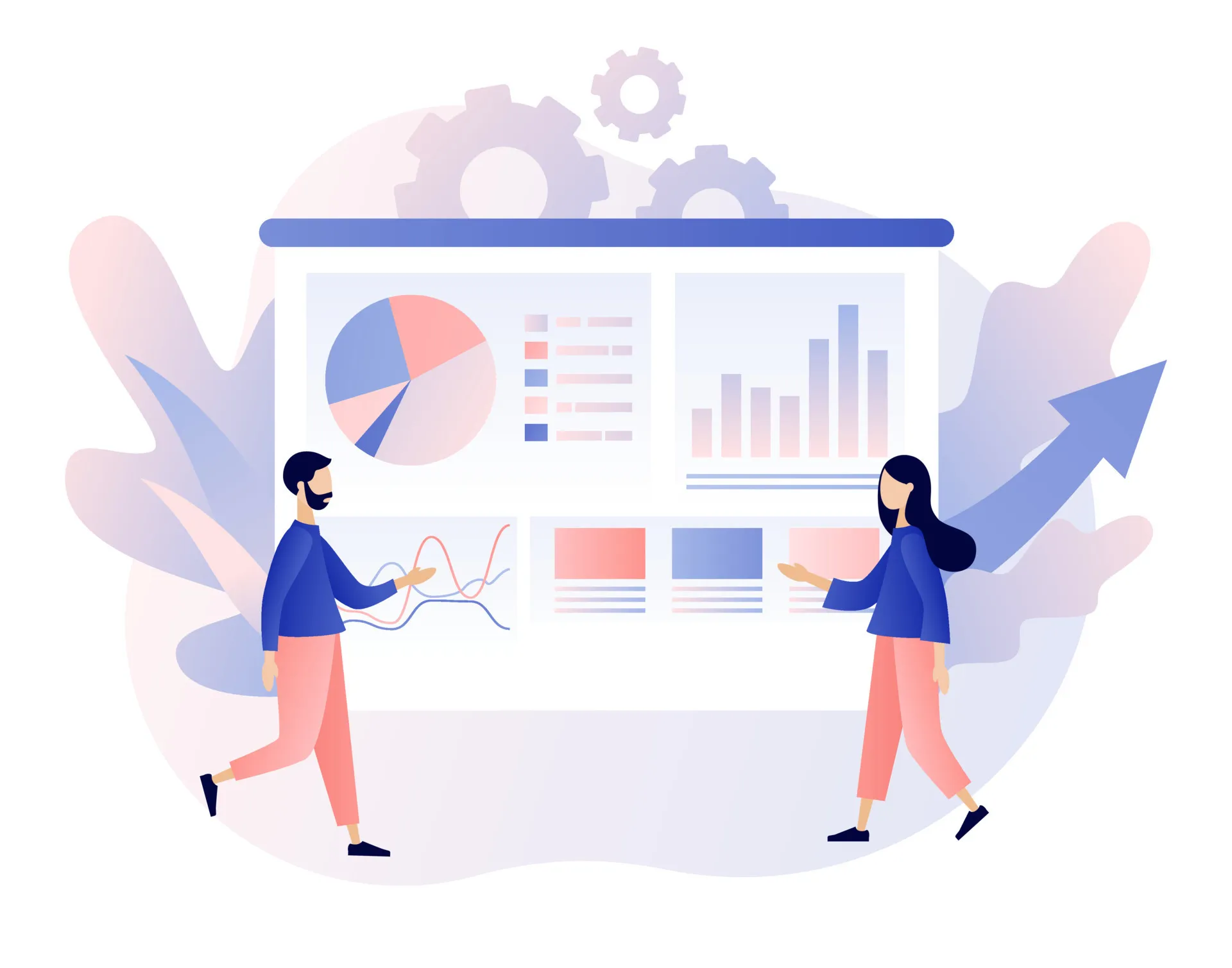
Measuring and analyzing the performance of B2B omnichannel marketing campaigns is essential for understanding their effectiveness and making data-driven decisions to optimize future efforts. Using data to continuously refine and enhance marketing strategies ensures that B2B omnichannel marketing efforts are effective, efficient, and aligned with business goals.
Case Studies of Successful B2B Omnichannel Marketing
Examining real-life examples of successful B2B omnichannel marketing campaigns can provide valuable insights and practical strategies for businesses looking to enhance their own marketing efforts. These case studies showcase how leading companies have effectively integrated multiple channels to deliver seamless and personalized customer experiences, drive engagement, and achieve significant business outcomes. By exploring the challenges these companies faced, the strategies they implemented, and the results they achieved, we can uncover key takeaways and best practices that can be applied to other B2B marketing initiatives.
Case Study 1: Microsoft
Microsoft, a global technology giant, has long been recognized for its innovative products and services. In the realm of B2B omnichannel marketing, Microsoft has set a benchmark by creating seamless and integrated experiences for its business customers.
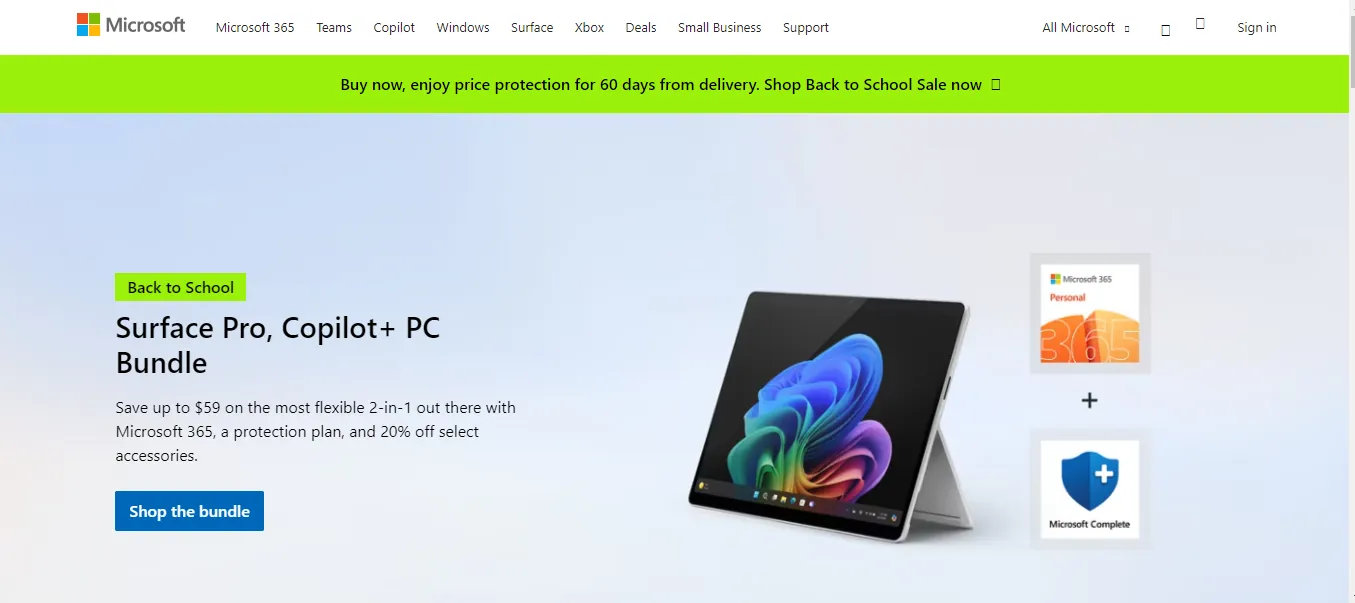
This case study delves into Microsoft’s background, the challenges it faced, the omnichannel strategy it implemented, and the results achieved, providing key takeaways for other businesses aiming to enhance their B2B omnichannel marketing efforts.
Background and Challenges
Microsoft, one of the world’s largest technology companies, faced several challenges in its B2B marketing efforts. With a vast product portfolio that includes software, hardware, and cloud services, Microsoft needed to effectively reach diverse business customers ranging from small startups to large enterprises. The primary challenges included:
- Complex Buyer Journeys: Microsoft’s products often involve long and complex sales cycles with multiple stakeholders involved in the decision-making process. This complexity required a tailored and cohesive approach to ensure consistent messaging and engagement across all touchpoints.
- Diverse Customer Segments: Microsoft’s customer base includes various industries, each with unique needs and preferences. Catering to these diverse segments necessitated a highly personalized marketing approach.
- Integration Across Channels: With numerous marketing channels at its disposal, Microsoft needed to ensure seamless integration to provide a consistent and unified customer experience.
Omnichannel Strategy and Execution
To address these challenges, Microsoft implemented a comprehensive B2B omnichannel marketing strategy focused on creating a seamless and personalized customer experience across all touchpoints.
- Unified Customer Data Platform: Microsoft integrated its customer data from various sources into a centralized Customer Data Platform (CDP). This unified data approach provided a 360-degree view of each customer, enabling personalized and informed interactions.
- Personalized Content and Messaging: Leveraging the unified customer data, Microsoft developed highly personalized content tailored to the specific needs and pain points of different customer segments. This included targeted email campaigns, personalized landing pages, and customized content recommendations.
- Account-Based Marketing (ABM): Microsoft employed ABM strategies to focus on high-value accounts. This approach involved creating bespoke marketing plans for individual accounts, addressing their unique challenges and requirements. ABM efforts were supported by personalized outreach, custom content, and dedicated account managers.
- Integrated Marketing Automation: To streamline and automate its marketing efforts, Microsoft utilized advanced marketing automation tools. These tools facilitated the execution of multi-channel campaigns, ensuring consistent messaging across email, social media, web, and direct mail.
- Webinars and Virtual Events: Microsoft hosted a series of webinars and virtual events to engage with potential and existing customers. These events provided valuable insights, showcased product capabilities, and facilitated interactive Q&A sessions, enhancing customer engagement and education.
- Data-Driven Decision Making: Microsoft continuously analyzed campaign performance using advanced analytics tools. By monitoring key metrics such as engagement rates, conversion rates, and customer feedback, the company was able to optimize its strategies in real-time, making data-driven adjustments to improve outcomes.
Results and Key Takeaways
Microsoft’s B2B omnichannel marketing strategy yielded significant positive results, demonstrating the effectiveness of their approach:
- Increased Engagement: Personalized content and targeted ABM efforts led to higher engagement rates across all channels. Customers received relevant and timely information, increasing their interaction with Microsoft’s content.
- Improved Lead Quality: The focus on personalized and data-driven marketing resulted in higher-quality leads. By targeting the right accounts with tailored messaging, Microsoft attracted more qualified prospects who were genuinely interested in their solutions.
- Higher Conversion Rates: The seamless integration of marketing efforts across channels and the use of marketing automation tools contributed to higher conversion rates. Prospects were guided smoothly through the buyer journey, from initial engagement to final purchase.
- Enhanced Customer Experience: The personalized approach and consistent messaging across all touchpoints significantly improved the overall customer experience. Customers felt understood and valued, leading to increased satisfaction and loyalty.
- Effective Use of Webinars and Events: The webinars and virtual events not only helped in educating customers but also positioned Microsoft as a thought leader in the industry. These events facilitated direct interaction with customers, addressing their queries and building stronger relationships.
- Data-Driven Optimization: Continuous monitoring and analysis of campaign performance allowed Microsoft to make real-time adjustments, ensuring optimal results. This data-driven approach enabled the company to identify successful strategies and replicate them across other campaigns.
Key takeaways from Microsoft’s success in B2B omnichannel marketing include the importance of unified customer data, the effectiveness of personalized content and ABM strategies, the value of integrated marketing automation, and the need for continuous optimization based on data-driven insights. By implementing a comprehensive and cohesive omnichannel strategy, Microsoft was able to overcome its challenges and achieve significant improvements in engagement, lead quality, conversion rates, and overall customer experience. This case study underscores the critical role of B2B omnichannel marketing in driving business growth and success in a competitive landscape.
Case Study 2: Oracle
Oracle, a global leader in enterprise software and cloud solutions, exemplifies effective B2B omnichannel marketing. The company’s multifaceted approach to engaging and converting business customers through various channels highlights its commitment to creating seamless and integrated customer experiences.
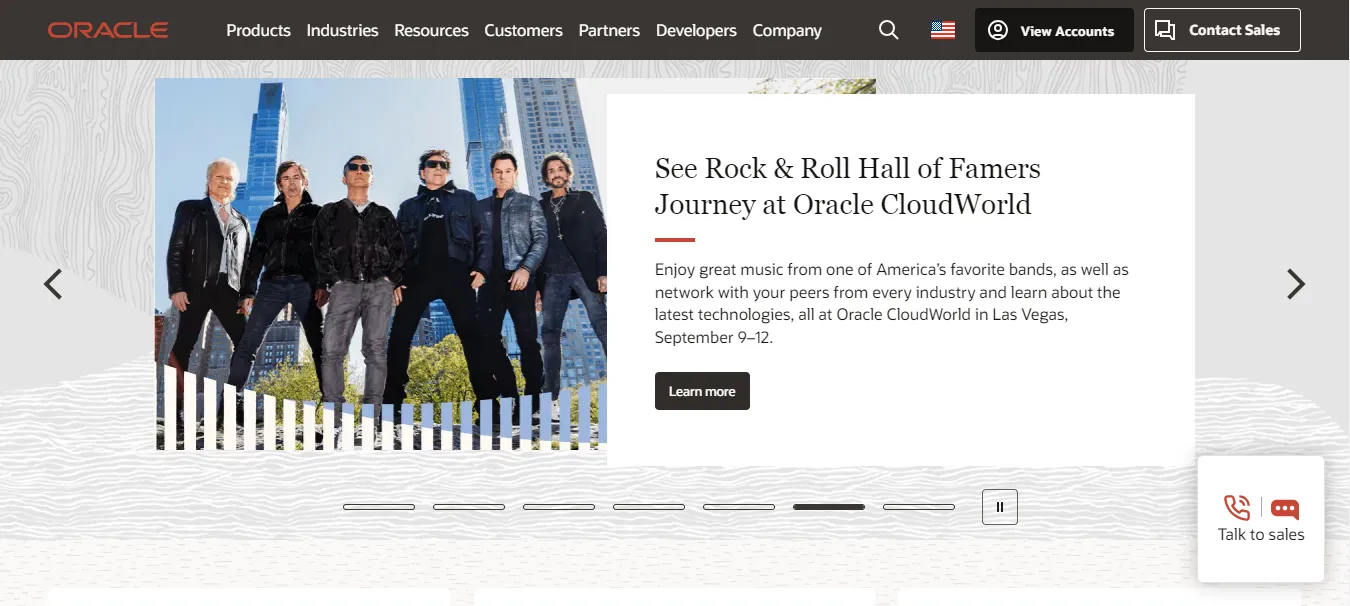
This case study explores Oracle’s background, the challenges it faced, the omnichannel strategies it employed, including Oracle Open World, and the impressive results it achieved.
Background and Challenges
Oracle operates in a highly competitive technology sector, providing a wide range of products and services, including database management systems, cloud solutions, and enterprise software. The primary challenges Oracle faced included:
- Diverse and Complex Customer Needs: Oracle’s B2B customers span numerous industries, each with specific requirements and challenges, necessitating tailored solutions.
- Lengthy Sales Cycles: The B2B technology sales process is often prolonged, involving multiple stakeholders and extensive evaluation periods.
- Channel Integration: Ensuring a consistent and seamless experience across various digital and offline channels was a critical challenge for Oracle, given the breadth of its product offerings and global reach.
- Effective Personalization: Delivering personalized experiences at scale required sophisticated data management and advanced analytics capabilities to cater to individual customer needs.
Omnichannel Strategy and Execution
To overcome these challenges, Oracle implemented a robust B2B omnichannel marketing strategy focusing on integration, personalization, and data-driven insights. Key components of Oracle’s strategy included:
- Unified Customer Data Platform: Oracle integrated its customer data from various touchpoints into a centralized platform. This platform consolidated data from CRM systems, marketing automation tools, sales interactions, and customer support engagements, providing a comprehensive view of each customer. This unified data approach enabled Oracle to deliver personalized and relevant marketing messages across all channels.
- Personalized Marketing Campaigns: Utilizing advanced data analytics and AI, Oracle developed highly personalized marketing campaigns. These campaigns included tailored content and product recommendations based on the individual profiles of their customers, considering factors such as industry, company size, and previous interactions with Oracle.
- Seamless Integration of Channels: Oracle ensured that all customer interactions were interconnected, regardless of whether they occurred online or offline. This integration included synchronizing digital experiences like webinars, virtual events, and online content with offline touchpoints such as trade shows, direct mail, and face-to-face sales meetings. The goal was to provide a cohesive and consistent experience across all channels.
- Comprehensive Content Strategy: Oracle crafted a diverse content strategy to meet the varied needs of its B2B audience. This included producing a wide array of content types such as whitepapers, case studies, webinars, video tutorials, and interactive demos. Each piece of content was designed to address specific stages of the buyer journey, from initial awareness to final decision-making.
- Account-Based Marketing (ABM): Oracle employed ABM strategies to target high-value accounts with customized marketing plans. This approach involved close collaboration between marketing and sales teams to deliver personalized experiences and solutions tailored to the unique challenges of key accounts.
- Marketing Automation and AI: Oracle leveraged advanced marketing automation tools and AI technologies to enhance campaign management and personalization. Automated workflows ensured timely follow-ups, personalized email sequences, and dynamic content delivery based on customer behavior and engagement.
- Oracle Open World: One of Oracle’s premier marketing strategies is Oracle Open World, an annual event held in San Francisco. This event is one of the largest technology gatherings globally, showcasing the latest and greatest of Oracle’s innovations. Oracle Open World features press releases, email campaigns, direct selling through various channels, and numerous interactive sessions. It serves as a significant touchpoint for Oracle’s B2B marketing efforts, allowing the company to engage directly with current and potential customers, demonstrate product capabilities, and reinforce its market leadership.
Results and Key Takeaways
Oracle’s B2B omnichannel marketing strategy yielded significant results, demonstrating the effectiveness of an integrated and personalized approach. Key outcomes included:
- Increased Engagement: The delivery of personalized and relevant content led to higher engagement rates across digital channels. Customers interacted more frequently with Oracle’s content, resulting in increased website traffic, higher email open rates, and more social media engagement.
- Higher Conversion Rates: The seamless integration of channels and personalized marketing efforts significantly improved conversion rates. Prospects were more likely to progress through the buyer journey and convert into paying customers due to the consistent and tailored experiences they received.
- Enhanced Customer Loyalty: By delivering personalized and relevant experiences, Oracle fostered stronger relationships with its customers, leading to higher satisfaction and loyalty. This, in turn, resulted in increased customer retention rates.
- Improved Sales Performance: The close collaboration between marketing and sales teams, facilitated by ABM strategies, resulted in better alignment and more effective sales efforts. Sales teams were equipped with valuable insights and personalized content, enabling them to engage with prospects more effectively and close deals faster.
- Data-Driven Decision Making: The unified customer data platform and advanced analytics capabilities allowed Oracle to make informed, data-driven decisions. Continuous monitoring and analysis of campaign performance enabled real-time adjustments and optimization, ensuring that marketing efforts remained effective and aligned with business goals.
Key takeaways from Oracle’s B2B omnichannel marketing success include:
- Integration is Essential: Seamless integration of digital and physical channels is crucial for delivering consistent and cohesive customer experiences. Ensure that all touchpoints are interconnected and provide a unified experience.
- Leverage Data and AI: Utilize advanced data analytics and AI technologies to gain deep insights into customer behavior and preferences. Personalize marketing efforts at scale to enhance engagement and conversion rates.
- Collaboration Between Teams: Foster close collaboration between marketing and sales teams to ensure alignment and effective execution of marketing strategies. Account-based marketing can be particularly effective for targeting high-value accounts.
- Content Strategy Matters: Develop a robust content strategy that addresses the diverse needs of your audience. Tailor content to different stages of the buyer journey and provide valuable and relevant information that guides prospects through the decision-making process.
- Continuous Optimization: Regularly analyze campaign performance and use data-driven insights to make real-time adjustments. Continuous optimization ensures that marketing efforts remain effective and aligned with evolving business goals.
Oracle’s B2B omnichannel marketing strategy exemplifies the power of integration, personalization, and data-driven decision making. By addressing the unique challenges of the B2B landscape and leveraging advanced technologies, Oracle was able to deliver exceptional customer experiences, drive higher engagement and conversion rates, and achieve sustained business growth. Other businesses can learn from Oracle’s approach and apply similar strategies to enhance their B2B omnichannel marketing efforts and achieve success in a competitive market.
Case Study 3: SAP
SAP, a global leader in enterprise application software, has successfully implemented B2B omnichannel marketing strategies to engage and convert business customers across diverse industries.
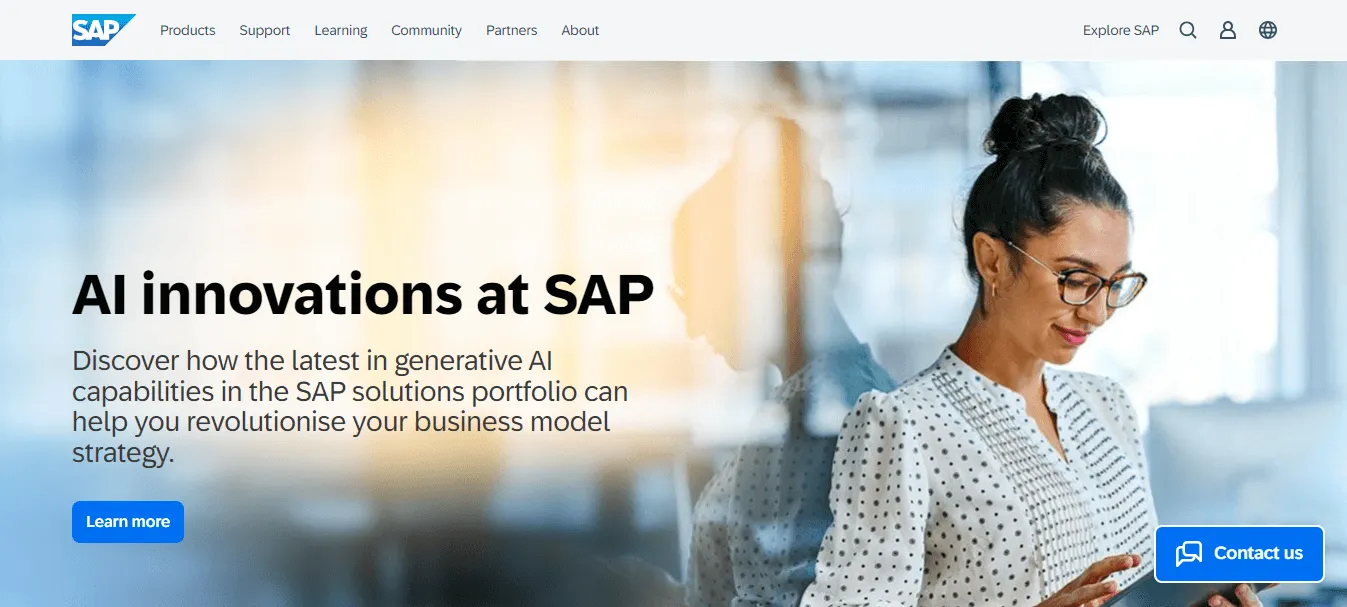
SAP’s comprehensive approach to integrating multiple marketing channels and delivering personalized experiences has positioned it as a benchmark for effective B2B marketing.
Background and Challenges
SAP provides a diverse portfolio of enterprise software solutions, including ERP, CRM, analytics, and supply chain management. The company serves a wide range of industries, such as manufacturing, retail, finance, and healthcare. Key challenges SAP faced included:
- Diverse Customer Base: SAP’s extensive customer base includes small businesses, large enterprises, and governmental organizations, each with unique requirements and operational complexities.
- Complex Sales Cycles: The B2B technology sales process is often lengthy, involving multiple decision-makers and thorough evaluations, which requires sustained engagement and tailored communication.
- Channel Consistency: Maintaining a consistent and seamless customer experience across multiple digital and physical channels was critical, given the broad scope of SAP’s operations and the variety of customer touchpoints.
- Data Utilization: Effectively leveraging vast amounts of customer data to deliver personalized and relevant experiences at scale posed a significant challenge.
Omnichannel Strategy and Execution
To tackle these challenges, SAP developed and executed a sophisticated B2B omnichannel marketing strategy. The strategy focused on integrating various marketing channels, personalizing customer interactions, and using data-driven insights to optimize marketing efforts. Key elements of SAP’s omnichannel strategy included:
- Integrated Customer Data Platform: SAP consolidated customer data from multiple touchpoints into a single, unified platform. This integration combined data from CRM systems, marketing automation tools, customer support interactions, and social media activities. The unified data platform enabled SAP to gain a comprehensive understanding of each customer’s needs and preferences, facilitating highly targeted marketing efforts.
- Personalized Marketing Campaigns: SAP employed advanced analytics and AI to create personalized marketing campaigns. These campaigns were designed to deliver customized content and recommendations based on individual customer profiles, including their industry, company size, and previous interactions with SAP. Personalized campaigns helped in addressing specific customer pain points and demonstrating the value of SAP’s solutions.
- Seamless Channel Integration: SAP ensured that all customer interactions were seamlessly integrated across digital and offline channels. This included aligning digital experiences such as webinars, virtual events, and online content with offline engagements like trade shows, direct mail, and face-to-face meetings. By providing a unified experience, SAP ensured that customers received consistent messaging and support throughout their buyer journey.
- Comprehensive Content Strategy: SAP developed a robust content strategy to cater to the diverse needs of its B2B audience. This strategy encompassed various content types, including whitepapers, case studies, webinars, video tutorials, and interactive demos. Each piece of content was tailored to different stages of the buyer journey, ensuring relevance and value at each touchpoint.
- Account-Based Marketing (ABM): SAP leveraged ABM to target high-value accounts with tailored marketing plans. This approach involved close collaboration between marketing and sales teams to deliver personalized experiences and solutions that addressed the specific challenges faced by key accounts. ABM helped SAP build deeper relationships with strategic clients and drive higher conversion rates.
- Marketing Automation and AI: SAP utilized marketing automation tools and AI technologies to enhance campaign management and personalization. Automated workflows enabled timely follow-ups, personalized email sequences, and dynamic content delivery based on customer behavior and engagement metrics. AI-powered insights allowed SAP to continuously refine its marketing strategies for optimal results.
- SAP Sapphire Now: SAP’s premier annual event, SAP Sapphire Now, played a crucial role in its B2B omnichannel marketing strategy. This high-profile event brought together business leaders, IT professionals, and SAP experts to showcase the latest innovations, share insights, and engage with customers. SAP Sapphire Now featured keynote sessions, product demonstrations, workshops, and networking opportunities, serving as a significant touchpoint for customer engagement and lead generation.
Results and Key Takeaways
SAP’s B2B omnichannel marketing strategy delivered substantial results, highlighting the effectiveness of an integrated and personalized approach. Key outcomes included:
- Enhanced Customer Engagement: Personalized and relevant content significantly boosted engagement rates across various channels. Customers were more likely to interact with SAP’s content, leading to increased website traffic, higher email open rates, and greater social media engagement.
- Improved Conversion Rates: The seamless integration of channels and personalized marketing efforts led to higher conversion rates. Prospective customers were more likely to progress through the buyer journey and become paying customers due to the tailored and consistent experiences they received.
- Strengthened Customer Loyalty: By delivering personalized and relevant experiences, SAP cultivated stronger relationships with its customers. This approach resulted in higher customer satisfaction and loyalty, translating into improved customer retention rates.
- Optimized Sales Performance: The collaboration between marketing and sales teams, facilitated by ABM strategies, enhanced sales performance. Sales teams were better equipped with insights and personalized content, enabling them to engage effectively with prospects and close deals more efficiently.
- Data-Driven Decision Making: The unified customer data platform and advanced analytics capabilities empowered SAP to make informed, data-driven decisions. Continuous monitoring and analysis of campaign performance allowed for real-time adjustments and optimization, ensuring that marketing efforts remained effective and aligned with business objectives.
Key takeaways from SAP’s B2B omnichannel marketing success include:
- Unified Data is Critical: Integrating customer data across all touchpoints is essential for gaining a comprehensive understanding of customer needs and delivering personalized experiences.
- Personalization Drives Engagement: Leveraging data and AI to create personalized marketing campaigns enhances customer engagement and increases the likelihood of conversion.
- Channel Integration is Vital: Ensuring a consistent and seamless experience across digital and offline channels is crucial for maintaining customer trust and satisfaction.
- Collaboration Enhances Performance: Close collaboration between marketing and sales teams, particularly through ABM strategies, can significantly improve sales performance and drive business growth.
- Continuous Optimization is Necessary: Regularly analyzing campaign performance and using data-driven insights to refine marketing strategies ensures that efforts remain effective and aligned with evolving business goals.
SAP’s B2B omnichannel marketing strategy exemplifies the importance of integration, personalization, and data-driven decision making in achieving marketing success. By addressing the unique challenges of the B2B landscape and leveraging advanced technologies, SAP was able to deliver exceptional customer experiences, drive higher engagement and conversion rates, and achieve sustained business growth.
Challenges and Solutions in B2B Omnichannel Marketing
Common Challenges
Integration of Technology and Systems
One of the foremost challenges in B2B omnichannel marketing is the integration of diverse technologies and systems. Modern marketing strategies rely on a plethora of tools and platforms, including CRM systems, marketing automation software, data analytics tools, and various communication channels. Ensuring that these disparate systems work together seamlessly is crucial for delivering a cohesive customer experience.

- Data Silos: Many organizations struggle with data silos, where information is isolated within different departments or systems. This fragmentation can lead to inconsistent customer profiles, hampering the ability to deliver personalized and coordinated marketing efforts.
- Legacy Systems: Integrating new marketing technologies with existing legacy systems can be particularly challenging. Legacy systems often lack the flexibility and compatibility needed to work with modern tools, making data integration and synchronization difficult.
- Complexity and Cost: The integration process itself can be complex and costly. It requires significant investment in both technology and skilled personnel to ensure that systems are properly aligned and data flows smoothly between them.
Consistency and Coordination Across Channels
Another significant challenge in B2B omnichannel marketing is maintaining consistency and coordination across various marketing channels. B2B buyers interact with brands through multiple touchpoints, including websites, social media, email, events, and direct sales interactions. Ensuring a unified and consistent experience across these channels is essential for building trust and engagement.
- Disjointed Customer Experiences: When marketing efforts across different channels are not well-coordinated, customers can experience disjointed and inconsistent interactions. This can lead to confusion and a lack of trust in the brand.
- Siloed Teams: Often, different teams manage different channels (e.g., social media team, email marketing team, sales team), leading to a lack of coordination and unified strategy. This siloed approach can result in inconsistent messaging and missed opportunities for cross-channel synergies.
- Brand Consistency: Maintaining brand consistency in terms of messaging, tone, and visual identity across all channels is challenging. Any inconsistency can dilute the brand’s impact and confuse customers.
Measuring ROI and Effectiveness
Measuring the return on investment (ROI) and overall effectiveness of B2B omnichannel marketing campaigns is another major challenge. The complexity of B2B buyer journeys, which involve multiple touchpoints and extended decision-making processes, makes it difficult to attribute success to specific channels or actions.

- Attribution Complexity: Determining which channels and touchpoints contributed most to a conversion or sale is challenging. Multi-touch attribution models are needed to accurately assess the impact of each interaction, but these models can be complex to implement and manage.
- Data Overload: The vast amount of data generated by omnichannel marketing efforts can be overwhelming. Identifying meaningful insights from this data requires advanced analytics capabilities and expertise.
- Linking Marketing Efforts to Revenue: Directly linking marketing activities to revenue and financial performance is often difficult. Many B2B sales cycles are long and involve multiple stages, making it hard to measure the immediate impact of marketing efforts on the bottom line.
Solutions and Best Practices
Overcoming the challenges in B2B omnichannel marketing requires strategic solutions and best practices that leverage technology, enhance collaboration, and ensure continuous improvement. By addressing the key issues related to technology integration, consistency, and measurement, businesses can optimize their B2B omnichannel marketing efforts and achieve better results. This section explores effective solutions and best practices to address these challenges.
Leveraging Technology and Automation
The integration of technology and automation is crucial for managing the complexities of B2B omnichannel marketing. Advanced tools and systems can streamline processes, enhance data accuracy, and enable more effective marketing strategies.
- Unified Customer Data Platforms (CDPs): Implementing a CDP helps centralize customer data from various sources, providing a single, comprehensive view of each customer. This centralized approach eliminates data silos and ensures that all customer interactions are informed by the same set of data.
- Marketing Automation: Automation tools can handle repetitive tasks such as email marketing, social media posting, and lead nurturing. By automating these processes, marketing teams can focus on more strategic activities. Automation also ensures timely and consistent communication with prospects and customers.
- CRM Integration: Integrating CRM systems with other marketing tools ensures that all customer data is synchronized across platforms. This integration facilitates better coordination between marketing and sales teams and provides a more seamless customer experience.
- AI and Machine Learning: AI and machine learning can analyze vast amounts of data to identify patterns and predict customer behavior. These insights can be used to personalize marketing campaigns, improve targeting, and optimize content delivery.
- API-Driven Connectivity: Using APIs to connect different systems enables seamless data exchange and interoperability. APIs help bridge the gap between legacy systems and modern marketing tools, ensuring that data flows smoothly between platforms.
Enhancing Collaboration and Communication
Effective collaboration and communication are essential for ensuring consistency and coordination across all marketing channels. By fostering a collaborative environment, businesses can align their marketing efforts and deliver a unified message to their audience.

- Cross-Functional Teams: Establishing cross-functional teams that include members from marketing, sales, customer service, and IT fosters better collaboration. Regular meetings and communication channels ensure that all teams are aligned and working towards common goals.
- Centralized Project Management Tools: Using project management tools like Asana, Trello, or Microsoft Teams helps streamline communication and collaboration. These tools provide a centralized platform for tracking progress, sharing updates, and managing tasks.
- Unified Branding Guidelines: Developing comprehensive branding guidelines that outline messaging, tone, and visual elements ensures consistency across all touchpoints. Providing training and resources to all teams helps maintain adherence to these guidelines.
- Regular Training and Workshops: Conducting regular training sessions and workshops keeps all teams updated on the latest marketing strategies, tools, and best practices. Continuous learning ensures that teams are equipped to handle new challenges and opportunities.
- Feedback Loops: Establishing feedback loops between marketing, sales, and customer service teams ensures that insights and feedback are shared regularly. This continuous exchange of information helps identify areas for improvement and enhances overall marketing effectiveness.
Continuous Monitoring and Improvement
Continuous monitoring and improvement are vital for maintaining the effectiveness of B2B omnichannel marketing strategies. By regularly analyzing performance data and making data-driven adjustments, businesses can optimize their marketing efforts and achieve better results.
- Advanced Analytics and Reporting: Leveraging advanced analytics tools provides detailed insights into campaign performance, customer behavior, and ROI. Tools like Google Analytics, HubSpot, and Adobe Analytics help track key metrics and identify trends.
- Multi-Touch Attribution Models: Implementing multi-touch attribution models helps understand the impact of various channels and touchpoints on customer conversions. These models assign value to each interaction, providing a clearer picture of the customer journey and campaign effectiveness.
- KPIs: Defining clear KPIs that align with business objectives is essential for measuring success. Common KPIs in B2B omnichannel marketing include lead generation metrics, conversion rates, customer acquisition cost (CAC), and customer lifetime value (CLV). Regularly tracking and analyzing these metrics helps evaluate the effectiveness of marketing efforts.
- A/B Testing and Experimentation: Conducting A/B testing and experimentation allows businesses to test different strategies and identify what works best. By experimenting with different messaging, content, and channels, businesses can optimize their marketing efforts for maximum impact.
- Real-Time Monitoring: Using real-time monitoring tools ensures that businesses can quickly identify and respond to issues or opportunities. Real-time data enables prompt adjustments to campaigns, improving responsiveness and effectiveness.
- Feedback and Improvement Cycles: Establishing feedback and improvement cycles ensures that marketing strategies are continuously refined based on performance data and feedback. Regular reviews and adjustments help keep marketing efforts aligned with evolving business goals and market conditions.
Addressing the challenges in B2B omnichannel marketing requires a strategic approach that leverages technology, enhances collaboration, and ensures continuous improvement. By implementing unified customer data platforms, marketing automation, and AI-driven insights, businesses can optimize their marketing strategies and deliver personalized experiences at scale. Enhancing collaboration and communication across teams ensures consistency and coordination, while continuous monitoring and improvement help maintain the effectiveness of marketing efforts. By adopting these solutions and best practices, businesses can overcome the common obstacles in B2B omnichannel marketing and achieve sustained success in a competitive market.
Conclusion
B2B omnichannel marketing is an essential strategy for businesses aiming to engage with their customers across multiple touchpoints seamlessly. One of the key takeaways from our discussion is the importance of adaptability in B2B omnichannel marketing. The business environment is constantly evolving, with new technologies, customer preferences, and market dynamics emerging regularly. To stay competitive, businesses must be agile and responsive to these changes. This involves continuously monitoring performance, experimenting with new strategies, and leveraging advanced technologies like AI and marketing automation. Adaptability ensures that marketing efforts remain relevant, effective, and aligned with the evolving needs of customers and the market.
All in all, B2B omnichannel marketing offers significant benefits, including enhanced customer engagement, higher conversion rates, and improved customer loyalty. However, achieving success requires a strategic approach that addresses the inherent challenges of integrating diverse technologies, ensuring consistency across channels, and accurately measuring performance. Businesses should invest in unified customer data platforms, leverage marketing automation, and foster cross-functional collaboration to optimize their marketing strategies. Regularly analyzing performance data and being open to continuous improvement are crucial for maintaining the effectiveness of omnichannel marketing efforts.
To excel in B2B omnichannel marketing, businesses should prioritize the integration of their marketing and sales technologies to create a seamless customer experience. They need to maintain consistent messaging and branding across all channels to build trust and engagement. Using advanced analytics to gain insights into customer behavior and campaign effectiveness is essential. Additionally, fostering a culture of collaboration and continuous learning within their teams and staying adaptable and responsive to changes in the market and customer preferences are vital. By following these recommendations and embracing the principles of B2B omnichannel marketing, businesses can build stronger relationships with their customers, drive sustainable growth, and achieve long-term success in a competitive marketplace.



